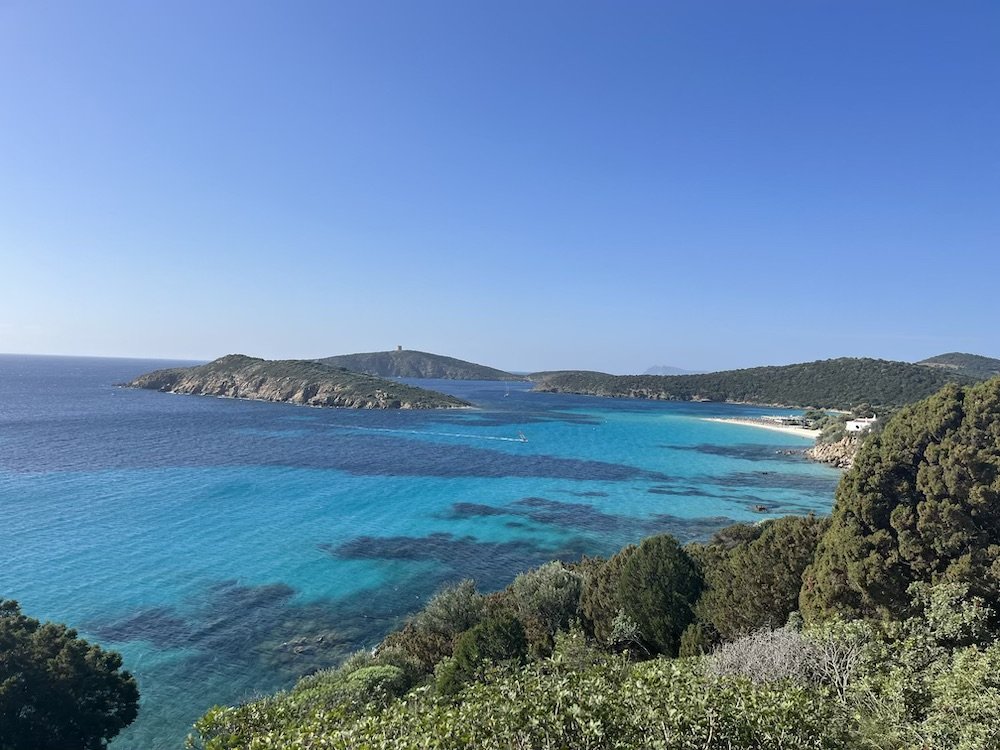A Local's Guide to Travel in Sardinia
Sardinia, Sardegna in Italian, is the second largest island in the Mediterranean (after Sicily) and is one of Italy’s 20 regions. It's also my home!
Famed for its fabulous beaches, my island has long been a favorite destination for vacationing Italians and Europeans, but it wasn’t until the last decade that it started to become popular with North Americans as well.
Almost the same size as Sicily in terms of area, Sardinia has only 1.5 million inhabitants compared to Sicily’s 5 million. The island is sparsely populated and most Sardinians live in four major urban areas: Cagliari, Sassari, Olbia, and Nuoro.
While the coast has many small towns and villages, the interior of the island, with the exception of the rugged Barbagia region, is mostly uninhabited.
The vast majority of visitors come to Sardinia for the beaches, but there’s also much beyond just sea and sand. Mysterious Bronze Age ruins dot the hinterland and remains of important Roman towns lie on windswept coasts, lapped by the sea.
There is also ample opportunity for fabulous hiking and outdoor activities in the mountains of the Barbagia and terrific gastronomic experiences at agriturismi, vineyards, farms, and local artisan producers all over the island.
Come for the beaches, stay for everything else!
For some “after school reading” once you finish this article, have a look at some of my other Sardinia guides:
Table of Contents
Affiliate disclosure: some of the links in this article are affiliate links. If you book using one of them, we’ll earn a small commission. All of our info is free to read and free of ads, so we appreciate it!
Sardinia planning cheatsheet
 Plan your itinerary with expert advice
Plan your itinerary with expert advice
- Book a Sardinia travel consultation with a local expert
 My favorite hotels in Sardinia
My favorite hotels in Sardinia
- Villa Fanny - my favorite property in Cagliari. $250/night
- SMY Carlos V - modern hotel with gorgeous sea views in Alghero. $200/night
- Stazzu Lu Ciaccaru - gorgeous retreat in the hills above the Costa Smeralda. $375/night
- Massida Country Retreat - stylish B&B overlooking Santa Teresa. $275/night
- Hotel Caramare - lovely seafront hotel in Cala Gonone. $150-250/night
- Cruccuris Resort - adults-only resort on the beach in Villasimius $300/night
- Su Gologone - rustic-chic rural retreat in the Barbagia mountains. $325/night
 Guided tours and activities
Guided tours and activities
 How to get around
How to get around
- Car rentals with DiscoverCars
- Ferries from FerryScanner
- Bus routes at Moovit App
Meet the author
Simone, the author of this guide (and all of our Sardinia articles), is a tour guide and trip planner covering his native island. He's been helping travelers plan immersive and authentic trips to Sardinia for over 20 years.
In addition to writing these fabulous guides and itineraries, he also offers Sardinia travel consultations for readers who want personalized help planning their trips.
Where is Sardinia?
Sardinia is a large island in the middle of the Mediterranean sea. It lies 200 km (124 miles) west of mainland Italy, located roughly at the same latitude as Rome. Interestingly, southern Sardinia is as close to the coast of Africa (200 km away) as it is to mainland Italy.
A flight from Rome to Cagliari (the island’s capital) takes one hour.
Within the Mediterranean, Sardinia is north of Tunisia and directly south of the French island of Corsica. To its east are the Balearic islands of Spain.
It is this location, quite literally at the crossroads of the Mediterranean, but still far from basically everywhere, that has made Sardinia a bit of an anomaly in regards to culture, cuisine, and history. It’s certainly Italian, but it’s also certainly different.
How to get here
Unless you’re traveling with your own car, the easiest way to get to Sardinia is always to fly. Flights are plentiful from all over Italy and Europe, cheap, and quick. Sardinia also has 3 different airports, so no matter which area of the island you intend to visit, you shouldn’t have trouble finding a direct flight.
You also have the option of taking the ferry. Sardinia has two large ferry ports in the cities of Olbia and Cagliari as well as smaller terminals at Golfo Aranci, Arbatax, and Porto Torres. The ferry really only makes sense if you’re already in mainland Italy with a car or if you want to avoid flying. For travelers without a car, the ferry is rarely any cheaper than a flight (and often more expensive).
Plane
Sardinia’s 3 airports, Cagliari, Alghero, and Olbia, all have international connections with mainland Europe and a host of Italian cities (Rome, Milan, Naples, Pisa, Genova, Venice, Palermo, Bari, etc.). However, there are no direct flights to Sardinia from North America or anywhere outside of Europe.
If your primary destination is the Costa Smeralda, La Maddalena, or the Gulf of Orosei, you should fly into Olbia.
If you want to visit Alghero and the northwest, you should of course fly into Alghero.
If you’ll be road tripping in South Sardinia and the Costa Verde, your airport of choice is Cagliari.
Where you fly out of will depend on where your itinerary finishes.
Flights to Sardinia from within Italy take 1-1.5 hours. Tickets cost anywhere from 20 euros to 150 depending on the season and how far in advance you book. ITA Airways runs many routes as does Aeroitalia. Low-cost carriers Ryanair, Volotea, and EasyJet also provide many non-stop connections.
Sardinia is primarily a summer destination, so there are far more direct flights from May to October. Outside of the summer season, many cities will not offer direct flights or may only have 1-2 per week.
Ferry
Olbia and Cagliari are Sardinia’s two main ferry terminals and they have frequent connections to the port of Civitavecchia near to Rome. You also have ferries to Sardinia from Genova in Liguria, Livorno in Tuscany and, infrequently, from Palermo in Sicily.
Depending on your point of departure in mainland Italy, you may need to use a route that arrives to secondary ferry terminals in the Sardinian towns of Porto Torres or Arbatax. Which ferry terminal makes the most sense for you to arrive to depends entirely on the area of Sardinia you intend to visit.
If coming from outside of Italy, you have ferries from Barcelona (Spain) and Marseilles (France).
Ferries often run during the night and almost all of them offer car transport.
In Italy, the two main ferry companies are Grimaldi Lines and Tirrenia. Moby Lines also runs various routes. With a car, expect to pay from 100 euros and up for a one-way ticket.
Why visit
With almost 2,000 km of stunning coastline, the main reason to visit Sardinia is to enjoy Italy’s best beaches.
From the calm, emerald bays of the Costa Smeralda to the wild, windswept shores of the Costa Verde, you’d need years to explore all the beaches here. Adding to the beach vacation appeal, you also have good hiking in the mountainous interior, a handful of pretty coastal cities, a neat crafts tradition, and evocative ruins from a mysterious Bronze Age culture. And hey, the food is good too!
A visit to Sardinia is perfect if you’re looking for a relaxing beach-focused trip, but with the potential for some sightseeing and outdoor activity as well.
And if you’re choosing between Sardinia or another Italian region for your week of sea, sand, and sun, think no more! Puglia has turquoise waters, Liguria’s rocky shores are impressive, the Amalfi Coast is always a stunner, and Sicily has some fabulous stretches of sand, but none of them even come close to Sardinia. When it comes to an Italian beach vacation, my island is always the best.
A brief history of Sardinia
The island, both in terms of geography and culture, is quite distinct from the rest of Italy.
There is evidence of inhabitation dating back to the Bronze age, and located at the crossroads of ancient Mediterranean trading routes, Sardinia has seen waves of colonization and foreign domination beginning with the Phoenicians, then the Romans, and, moving into more modern times, control of the island passing from the states of Pisa and Genova and then eventually to the Crown of Aragon (the Catalan/Spanish).
In the early 1700s the Aragonese ceded the Kingdom of Sardinia to the House of Savoy, one of Italy’s most powerful dynasties, to whom it would remain until Italian unification and the creation of the modern Italian state.
While various empires, kingdoms, and city states vied for nominal control over the island, with little in the way of natural resources and a not particularly strategic location, Sardinia was largely ignored by major powers and left to its own devices throughout history.
Sardinians are fiercely proud of their island and their heritage, and the result is a place that is often curiously different from the rest of Italy.
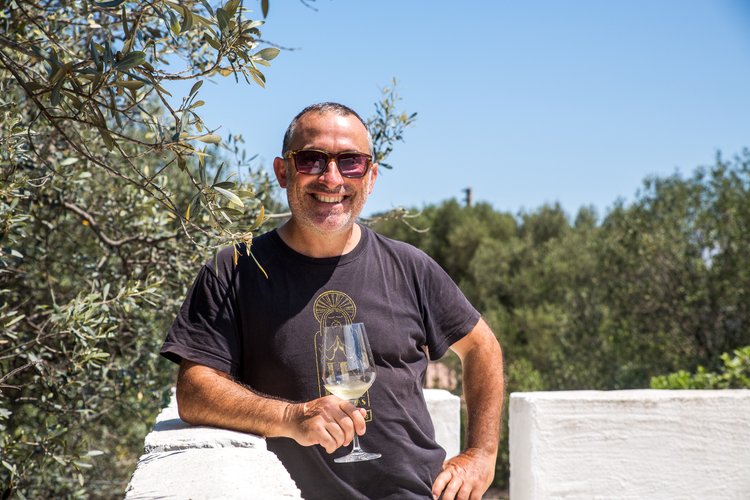

Weather & when to visit
Fall - Best time to visit
The best time to visit Sardinia is indisputably in the fall. The weather is warm enough for swimming throughout September and typically even until the end of October, and by this time of year the summer crowds are almost all gone. Prices are also much lower than in high season (summer).
You have daily average temperatures between 70 and 80 degrees; perfect for walking, cycling, swimming and other outdoor activities. The water temperature is also the warmest of any of time of the year, and the days are clear and sunny with very little rainfall.
From late September, the crowds have almost all departed and it will often feel like you have beaches entirely to yourself. Almost all businesses remain open through October, but you’ll see prices for things like rental cars, accommodation, and boat rentals all plummet.
The fall season is also the perfect time to visit the inland Barbagia region as the annual Autunno in Barbagia (Autumn in Barbagia) festival takes places in towns all throughout the interior.
Late spring - Good, but not as good as fall
Late spring is a good time to visit Sardinia, but it’s not ideal. The weather conditions are similar to those of early fall and the summer crowds have not yet arrived. However, because the water hasn’t had a chance to warm up yet, it’s often not really warm enough for swimming. Considering most people come here to visit our amazing beaches, not being able to swim may be a dealbreaker.
If you’re happy to just see beaches even if you can’t swim, then you can have a great time. In the interior of the country the mountains are green and bright, flowers are in bloom, and everything is springing back to life. Cities and towns are busy as people gear up for the summer, and it’s a great time for outdoors activities like hiking, biking, and even boat trips.
From May through the first week of June, you’ll get great weather, and businesses, hotels, infrastructure, service providers, and just about everyone else will be up and running, but all without the summer price tags.
Summer - Full on beach season, but lots of crowds
In summer, the months of July and August are packed as holidaying Europeans and Italians all descend on Sardinia to hit the beach and escape the oppressive heat. Although you can cool off in the water, temperatures can get pretty roasting on land. Prices skyrocket as well and availability is limited on the most popular parts of the coast.
Summer in Sardinia is pure Mediterranean beach vacation vibes, and a visit this time of year is a lot of fun, but you do need to be prepared for the trade-offs of high prices, big crowds, and scorching temperatures.
Winter - Not worth it for most people
Visiting Sardinia in the winter off season isn’t an outright bad idea, as the weather is good when compared with much of North America and Northern Europe. However, Sardinia is a beach destination and, while still lovely in winter, visiting an island without getting the chance to go swimming sort of defeats the point.
How long to spend
I’ve already said it, but it bears repeating: Sardinia is a big island. What look like small distances on the map can actually take a very long time to traverse. There are few highways and many destinations are only accessible by small, and slow, provincial roads. As most visitors come for the beaches, you’ll find yourself moving around a lot and this takes time.
My advice for how long you need here depends on what you're planning to do. If you're visiting Sardinia as part of a longer trip to Italy and just want to spend some time at the beach, I recommend 3 days as the bare minimum amount of time to visit. If you want to actually see a little bit of the island in addition to beach lounging, you'll need 5 days.
Now, if you want to explore Sardinia, visiting beaches, natural places, and a few of the cities, you need 7-10 days. Even this will not let you see the entire island, but it's enough time to see a nice chunk of it.
3 days - for a quick beach break
With 3 days, pick a city like Cagliari, Alghero, or Olbia (or a nearby beach town) and base yourself there for your entire stay. All three cities have lots of good beaches within easy reach, so you'll have plenty of beach hopping possibilities. That said, 3 days is far too little time to come to Sardinia and I don't recommend it.
5 days - beach hop and explore one part of Sardinia
If you have 5 days, you should stick to the above advice and still base yourself in just one larger region. Remember, you're probably here to relax on the beach, and that means that you don't want to be constantly on the move. Every region of coastal Sardinia has enough fabulous beaches to keep you occupied for 5 days.
With 5 days, I normally recommend choosing 2 bases (but within a single region) in order to cut down on the amount of driving you'll have to do. For regions, you're looking at the Northwest (Alghero and around), the Northeast (Olbia and around), the Southwest (Cagliari and west - the Costa Verde), and the Southeast (Cagliari and east - meaning Villasimius and the Ogliastra coast).
7 days - time to visit two regions
If you have 7 days, you’re best sticking to just two regions; say, the areas around Alghero and the Costa Smeralda or south Sardinia, from Villasimius to the Costa Verde. Check out my 7-day south Sardinia itinerary for some ideas.
10 days - the ideal amount of time for a big island trip
10 days, and 3 different bases, will let you explore most of the island’s highlights, though just the surface. In two weeks you could probably cover the entire island, though it’d still be a fast-paced trip.
With 10 days, you could plan to see 3 out of Sardinia’s 4 major regions. For example, you could spend 4 days exploring Cagliari and south Sardinia, a few days around Alghero in the Northwest, and a few days on the Costa Smeralda and Maddalena archipelago in the Northeast. To do so, you’d need to plan on 3-4 different bases, and you’d absolutely need a rental car.
How to get around
If you’re coming to Sardinia for more than a few days and want to sea beaches and nature outside of the cities, you absolutely have to rent a car.
Sardinia's public transport is rather poor, there is no real train service, and many beaches and natural places are only reachable by car.
Roads throghout the islands are mostly in good shape and because most of the coast is not very mountainous, the roads that you'll be driving on tend to be easy to navigate. Parking in towns and beaches is always plentiful, so that's also not a concern.
Public transport
Public transportation in Sardinia is extremely limited and, with the exception of around Cagliari and a few other cities, the only regular connections are those between major towns and cities. You will not be able to rely on buses to get you to the beach or just about anywhere else of interest.
Even for those with more time and who can afford to lose hours making connections, it just doesn’t make sense to come here and try to move around without a car.
If you don’t heed this advice and still plan to come without renting a car, make sure you choose one or two areas that have a town or city center with good amenities, frequent bus connections, and walkable distances to local beaches.
If relying on public transport, know that the best beaches are typically further out of the way and buses won’t get you to them. The beaches that you can access will, of course, be the most crowded. In shoulder season, that might not be a problem. But in the heart of summer, you don’t want to be confined to only beaches teeming with other people.
Renting a car
If you choose to rent a car while in Sardinia (and you should) there are lots of companies to choose from, with widely varying prices and car conditions.
In general, you should plan on picking up a car at whatever airport you arrive to. Cagliari, Olbia, and Alghero airports and city centers all have lots of car rental options to choose from.
Because it often makes sense for Sardinia itineraries to start and end at different airports, be aware that one-way drop off fees may apply for rentals with different pick-up and drop-off locations.
To check prices and book, I recommend using DiscoverCars. It’s a car rental website that includes offerings from all the major international rental companies as well as lots of smaller local agencies, which often have much better pricing. You can often find great deals.


Where to base yourself
Luci di la Muntagna hotel in Porto Cervo. Photo: Lucidilamuntagna, CC BY-SA 3.0, via Wikimedia Commons
Where to stay in Sardinia or where to base yourself on the island is an impossible question to answer without more info. Each region has its own appeal and is best for certain types of travelers. And moreover, because Sardinia is big, you will need multiple bases in order to explore it properly.
For anyone with 5 days or more, and a car, my recommendation is usually to try to see two different regions. This usually means planning a road trip with different bases every night or two. As such, I don’t typically recommend choosing one or two bases and trying to explore from them as you’ll wind up spending too much time driving, often retracing routes from previous days. It’s a waste of time.
Now, if you’re trying to decide which part of the island is right for you (i.e. which region), that’s something I can better help with.
If you’re looking to experience local culture, get off the beaten path, and enjoy great natural landscapes, head to the Barbagia.
For the best beaches, I always recommend spending at least 3-5 days in Northeastern Sardinia visiting places like La Maddalena, the Costa Smeralda, and the Gulf of Orosei.
If you want great beaches, but also other things to see and do, I’d recommend the area around Teulada in the Southwest. You have many terrific beaches (and good boat trips), but Nora archaeological site is nearby, Cagliari is only an hour away, the islands of Carloforte and Sant’Antioco are within easy reach, and you have interesting mining sites, hikes, and more on the Costa Verde.
For those after a few days of pure beach relax, Villasimius and Southeast Sardinia are a treat. There’s very little to do beyond going to the beach, so it’s the perfect place to just totally chill out.
And finally, if you want to stay in a city from which you can make day trips to pretty towns, good beaches, and some cool natural sites, Alghero is ideal.
Things to do in Sardinia
Sardinia is a summer destination and most people come here for the beach and the sea. Rightly so! But there’s also actually quite a lot more to do. The island has interesting terrain with a mountainous interior, rugged coastal cliffs, flat sandy beaches, densely forested patches, and an interesting network of caves. There are also many charming towns and small cities that make for fun day trips.
But if I’m being totally honest, there isn’t so much in the way of cities, art, and history to explore here.
Even the cities of Alghero and Cagliari, both of which are pretty and pleasant, have relatively little in the way of obvious sights. Most towns have none of their historical architecture remaining and there are relatively few museums and major sites of archeological and cultural interest.
While this might sound disappointing, it shouldn’t. At the end of the day, it just means that you can focus on what Sardinia does best; nature!
Without the constant fear of missing out, you can dedicate yourself to beach hopping, hiking, cycling, road trips, boating, leisurely lounging, and whatever other outdoor pursuits you enjoy. And eating - lots of eating!
Below, I’ve included a few of my favorite activities to do during a trip here, but for a more detailed guide, read my article on what to do in Sardinia.
1. Hit the beach
Visitors always focus on the beaches of the Northeast (Costa Smeralda, La Maddalena, Gulf of Orosei, and the Baunei coast), and they are indeed gorgeous. They might even be the best in Sardinia, but the entire island has fabulous beaches, so no matter where you go, you will find dozens of beaches that will probably rank among the best you've ever seen
2. Take a boat trip
The most famous boat trip in Sardinia is certainly out to the Baunei coast beaches of Cala Mariolu and Cala Luna, but you have so many other potential places to do boat trips.
Visit Pan di Zucchero from Buggeru, boat around Sant’Antioco, visit the coast of Teulada, sail around La Maddalena, etc. Don't only focus on one location for potential boat trips!
3. Explore cave systems
All those limestone cliffs and karstic mountains aren't only pretty to see above ground! Sardinia has a vast network of cave systems all over the island, and you can do really interesting tours underground to see massive collections of stalactites and stalagmites.
A cave tour is always a good idea with kids, but also a great idea when rain ruins your other plans.
4. Go hiking
The Supramonte mountains in the island's interior certainly have the best hiking trails of anywhere in the island (and the most beautiful natural terrain), but you have lots of good coastal hikes everywhere. If you're not sure what's around you, you can always plug your location into the AllTrails app and see what your options are.
5. Learn about our history at Bronze Age and Roman ruins
Sardinia certainly doesn't have anywhere near the number of ruins that you find on mainland Italy. And what you will find also can't rival those ruins in terms of grandeur, but that doesn't mean there aren't interesting sites here.
First of all, visiting Nuraghe archaeological sites can only be done here - these are the ruins of a mysterious Bronze Age civilization that inhabited Sardinia and about which very little is known. Then, you have some lovely seaside Roman and Phoenician ruins too (Tharros and Nora).
6. Have a meal at an agriturismo
An agriturismo is a sort of working farm that also provides accommodation, almost always with an on-site restaurant that prepares meals using the farm's produce and products. Some of these are quite rustic while others are rather chic.
Meals are typically done at big communal tables with a set menu that is shared. It's a nice way to try typical foods, meet other people, and learn a bit about Sardinian culture.
7. Leave the main island and visit smaller ones offshore
Sardinia is, of course, an island, but the region is not just one island. There are lots of little islands all around the coast and, if you're near one of them, a day trip is always a blast.
In the Northeast, you have the inimitable La Maddalena archipelago, in the south you have Carloforte and Sant’Antioco, and up in the Northwest, Asinara island has been turned into a protected reserve.
8. Shop for traditional Sardinian handicrafts
If you're looking for souvenirs (or just like handicrafts), Sardinia has a few main products to consider. First, knife-making is an ancient tradition on the island and our knives are highly prized.
Next, you have all sorts of things made of cork. As you drive around, you'll probably notice all the cork trees, many of them stripped of their bark. Well, Sardinia is one of the largest producers of cork in the world!
And last, look to the sea! Those azure waters hide a particular treasure: coral. Alghero in particular is known for its production of high quality coral, but you can find beautiful pieces of jewlery made from our lovely red coral all over the island.
9. Sample local wine
Few people know much about Sardinian wine, but its reputation internationally is increasing rapidly with every year. Known primarily for production of crisp, white Vermentino and full-bodied red Cannonau, wineries and vineyards are innovating and starting to produce truly world class varietals.
10. Spend a little bit of time in our cities
I fully understand that the thought of tearing yourself away from the beach to head into a busy city might not be the most appealing, but… you really should! Spending a day somewhere like Cagliari or Alghero really is a nice thing to do while in Sardinia.
Both cities are pretty, lively, full of good restaurants and bars, and fun to spend some time in. They both also have very nice city beaches, so you won't have to deprive yourself entirely!


Where to go in Sardinia
Sardinia technically is made up of 6 provinces as well as 2 cities that are their own, separate entities. That said, the provincial designations aren’t really relevant (or useful) for travelers. Instead, I always recommend dividing the island into 5 distinct areas:
the Northwest - Alghero and around
the Northeast - Olbia, the Costa Smeralda, and La Maddalena
the Barbagia - Nuoro and the Supramonte mountains
the Southeast - Villasimius and Costa Rei
the Southwest (Cagliari and west)
This isn’t a perfect definition, but it works.
To help you think about where you’d like to go in Sardinia, I’ve included an interactive map with pins for some of my favorite locations all around the island.
Each location pinned on the map is described in more detail in the regional guides below.
Best places to visit in Northwest Sardinia
Northwestern Sardinia contains the cities of Alghero and Sassari, the beaches of the Sinis peninsula, the charming town of Bosa, the Roman ruins of Tharros, the hilltop medieval town of Castelsardo, and world-famous Stintino/La Pelosa beach. The Parco Nazionale dell’Asinara is another fun place to visit on a day trip.
The region is most easily accessed from the city of Alghero which has an international airport used by many low-cost European carriers. Sassari is actually the larger city of the two, but Alghero’s seaside location, elegant architecture, and its international airport make it the much more popular tourist destination.
Alghero is certainly Sardinia’s most atmospheric city and its an excellent choice for couples, as well as just about everyone else. The surrounding region offers a nice mix here of interesting towns and cities along with fantastic beaches.
The beaches north of Alghero and stretching over to Castelsardo get much less fanfare than other parts of Sardinia. They’re still nice, but they’re not typically regarded as the island’s best. A fair deal to the south, in the far end of the region, you’ll find the narrow, white sand beaches of the Sinis Peninsula, which are genuinely excellent and also feel a little bit wild.
While the region doesn’t offer the same number of beaches as others, it offers more in the way of historic towns and cities to explore. A little under an hour to the south of Alghero is the picturesque town of Bosa, probably the prettiest in Sardinia. To the north, as you round the coast heading east, medieval Castelsardo sits atop the cliffs and is a joy to explore for a few hours.
For ancient history buffs, the Phoenician and Roman ruins at Tharros make for a good addition to a day of beach hopping along the coast of the Sinis peninsula.

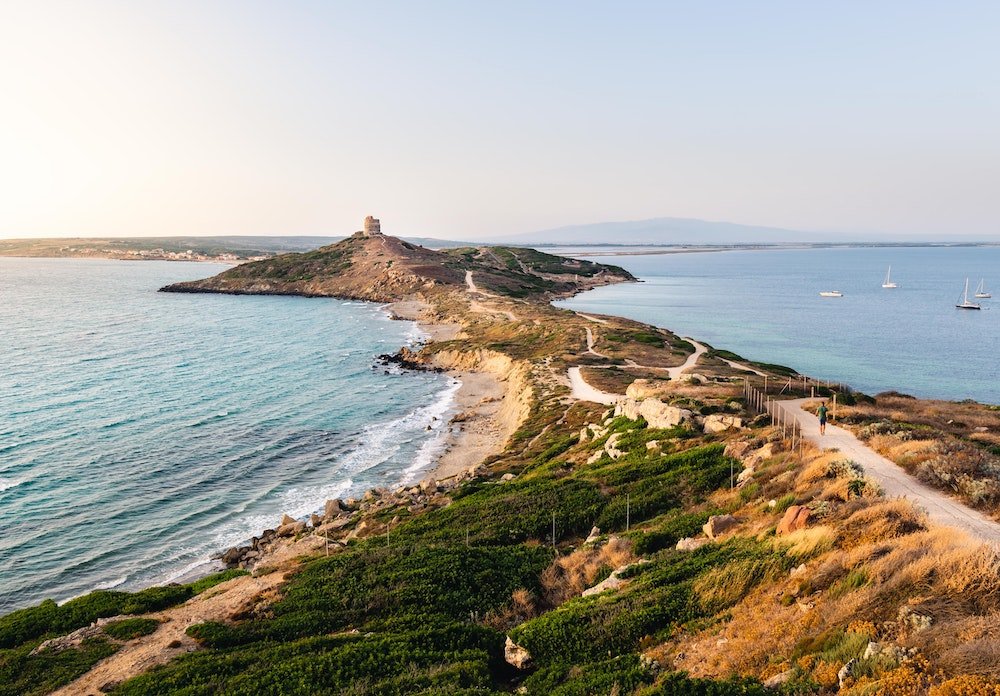
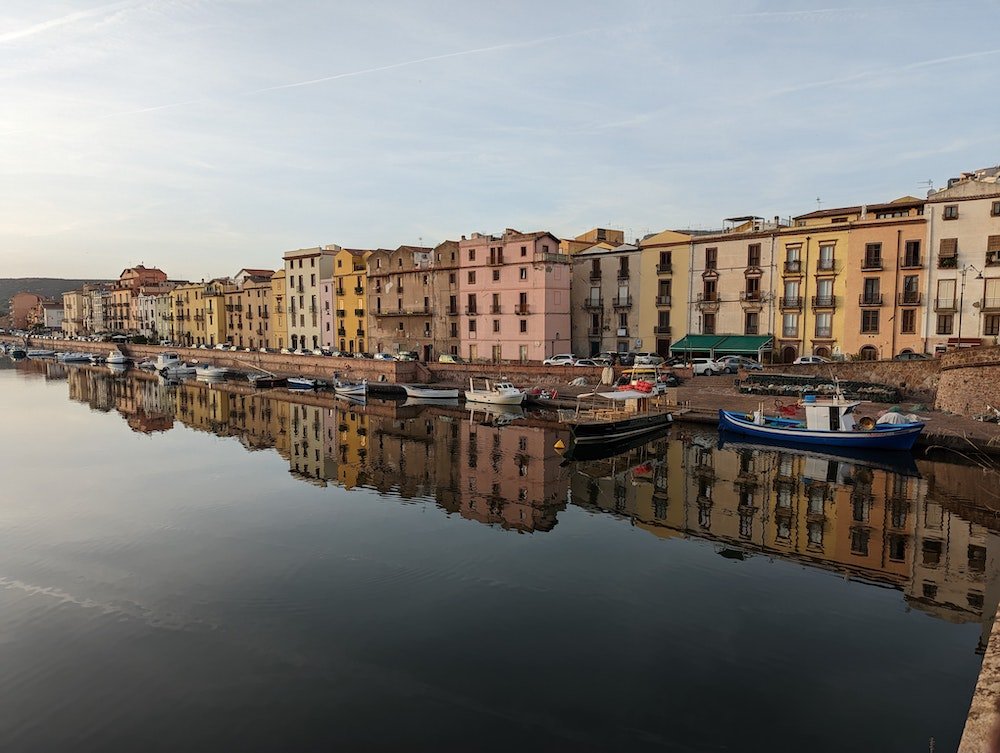
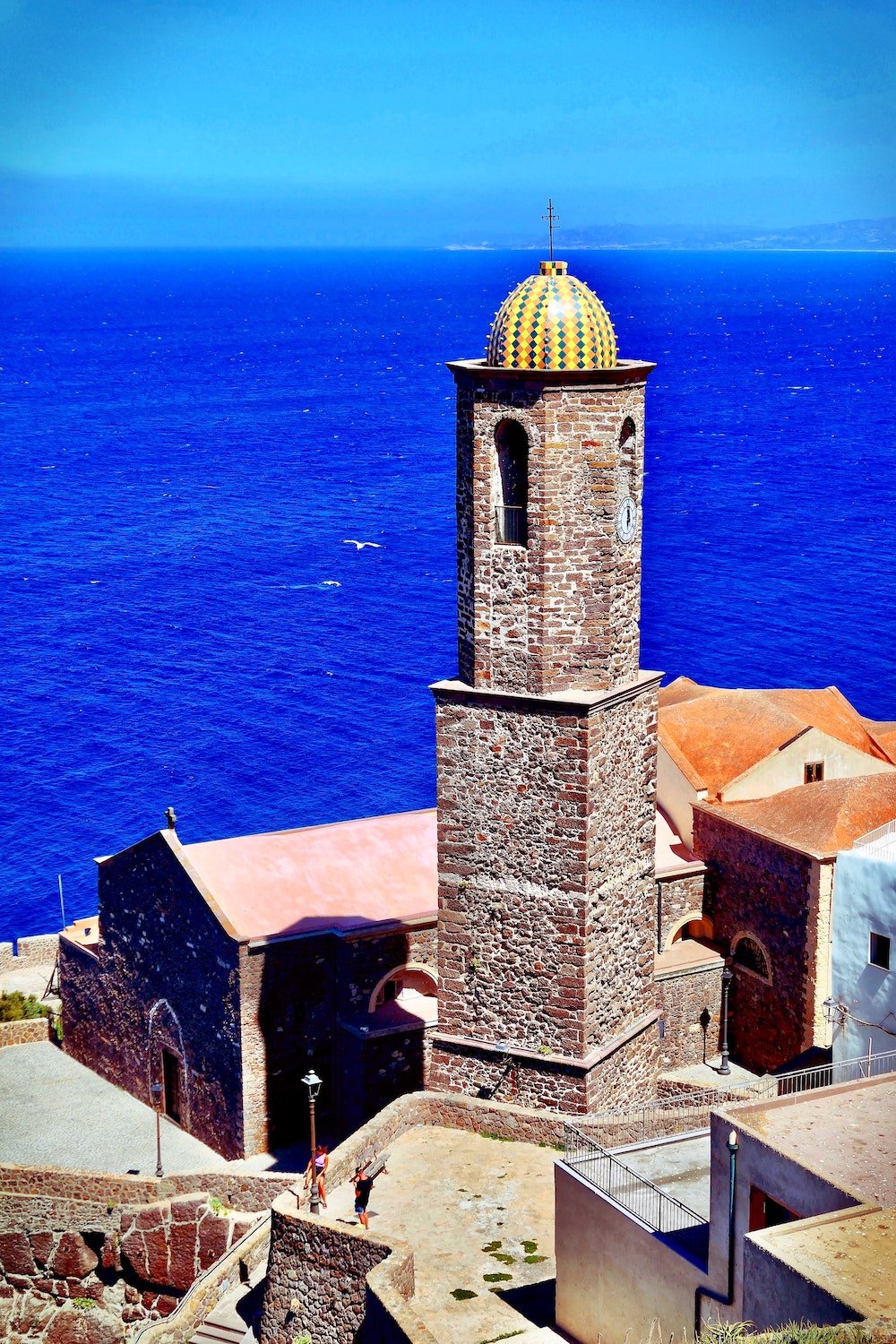
1. Alghero
Alghero is a charming coastal city of about 40,000 people. It has a well-preserved historical core, a decent city beach, and elegant promenades along the old city walls that line the seafront.
Alghero was the center of Spanish rule in Sardinia for centuries and the Aragonese built some of their most lovely buildings in the city. The cheerful, multi-colored tiled roof churches are one reminder of the Aragonese’s past presence here. The local dialect of Sardo (the Sardinian language) is another; it is tinged with both Spanish and Catalan.
The city offers good restaurants, a fine selection of accommodation, and easy access to the region beyond.
2. Capo Caccia promontory and Grotta di Nettuno
The Capo Caccia promontory is just to the north of Alghero and, from the top, offers one of Sardinia’s best sunset viewpoints. The Grotta di Nettuno is a cave complex at the very tip of the promontory where visitors can take guided tours to see massive stalactites and stalagmites. It’s a very popular outing from Alghero.
3. Le Bombarde, Lazzaretto, and Mugoni beaches
Three lovely beaches all just a few minutes drive (or bus) from the center of Alghero. Mugoni is certainly the nicest.
4. Stintino and La Pelosa beach
Stintino is a town about 45 kms north of Alghero that is home to La Pelosa beach, an iconic stretch of pearl-white sand with a sea that seems to divide into three hues of stunning blue.
The entire beach is watched over by a solitary Aragonese watch tower on an opposite bank. It’s one of Sardinia’s most evocative beaches.
More on Stintino in my guide to Sardinia's best beaches.
5. Bosa town
Bosa is a charming town about an hour south of Alghero. The center is divided in two by a river and an imposing castle towers over the city from a nearby hillside. The historic core is a jumble of multi-colored buildings that make for a pleasant wander.
Learn more about Bosa in my one week Sardinia itinerary.
6. Sinis Peninsula
The Sinis peninsula is technically in the province of Oristano and is debatable whether this is Northwest or Southwest Sardinia. We call it Northwest. It’s a protected area of lovely thin beaches with soft white sands.
7. Roman and Phoenician ruins at Tharros
Dating back over two thousand years, the ruins at Tharros are excellently preserved and your best chance to see evidence of Punic and Roman history in Sardinia.
8. Medieval Castelsardo
An hour northeast of Alghero, Castelsardo is a pretty medieval town perched atop a cliff with a fabulously preserved 1,000 year old castle. The castle houses an excellent museum about traditional basketweaving in Sardinia. It’s a great place to pick up some artisan souvenirs.
Best places to visit in Northeast Sardinia
Northeast Sardinia is far and away the most famous part of the island and it’s the home of the world-renowned Costa Smeralda (Emerald Coast) and the fabulous archipelago of La Maddalena. The area is accessible from the city of Olbia with an international airport that offers connections to mainland Italy and all over Europe.
The Costa Smeralda is a short stretch of coast just north of the city of Olbia and it became famous a few decades ago as a place for jet-setting Arab sheiks, Russian oligarchs, ex Italian Prime Minister Silvio Berlusconi, and much of the rest of the world’s elite.
Towns like Porto Cervo and Porto Rotondo are jet-set favorites, and you’ll find incredibly expensive hotels and villas (almost always tastefully developed - by law) wherever you look. If you’re looking for full-service beach clubs, high end restaurants, and nightlife, the Costa Smeralda will be right up your alley.
Those without billions in the bank should plan on a day trip here, as accommodation prices are eye watering. If you do find a reasonable hotel, you’re likely to be competing for open parking spaces with Ferraris and Lamborghinis…
Here you’ll also find the wonderful La Maddalena archipelago, white sandy beaches of the Gallura coastline, and the pristine waters of the Gulf of Orosei, including Cala Gonone and its famed beaches like Cala Mariolu, reachable only by boat or long hike.
The main city and gateway to the region is Olbia, but it doesn’t offer much beyond transit connections. The northeast’s beaches tend to be small, protected coves with unbelievably blue-green waters, sandy beaches, and giant pinkish rocks.
Towns like Posada, Budoni, and San Teodoro are all pleasant little places too.
There isn’t much to see in the region in the way of history or culture, but the beaches are jaw-dropping. If you take a look at a map, you’ll understand why. The entire coast is made up of countless little bays and inlets with calm waters whose shades of blue remind more of the Maldives than the Mediterranean.
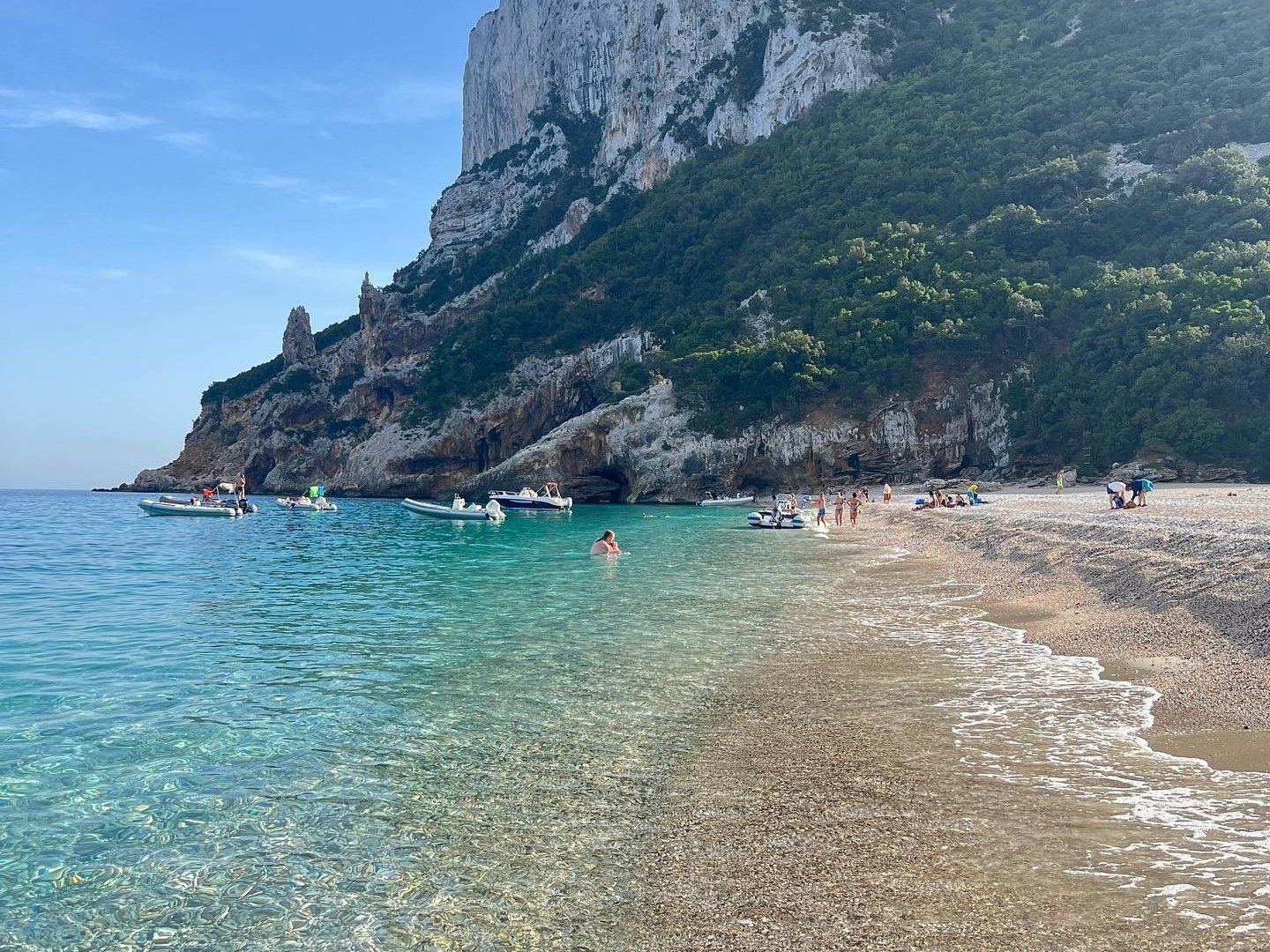
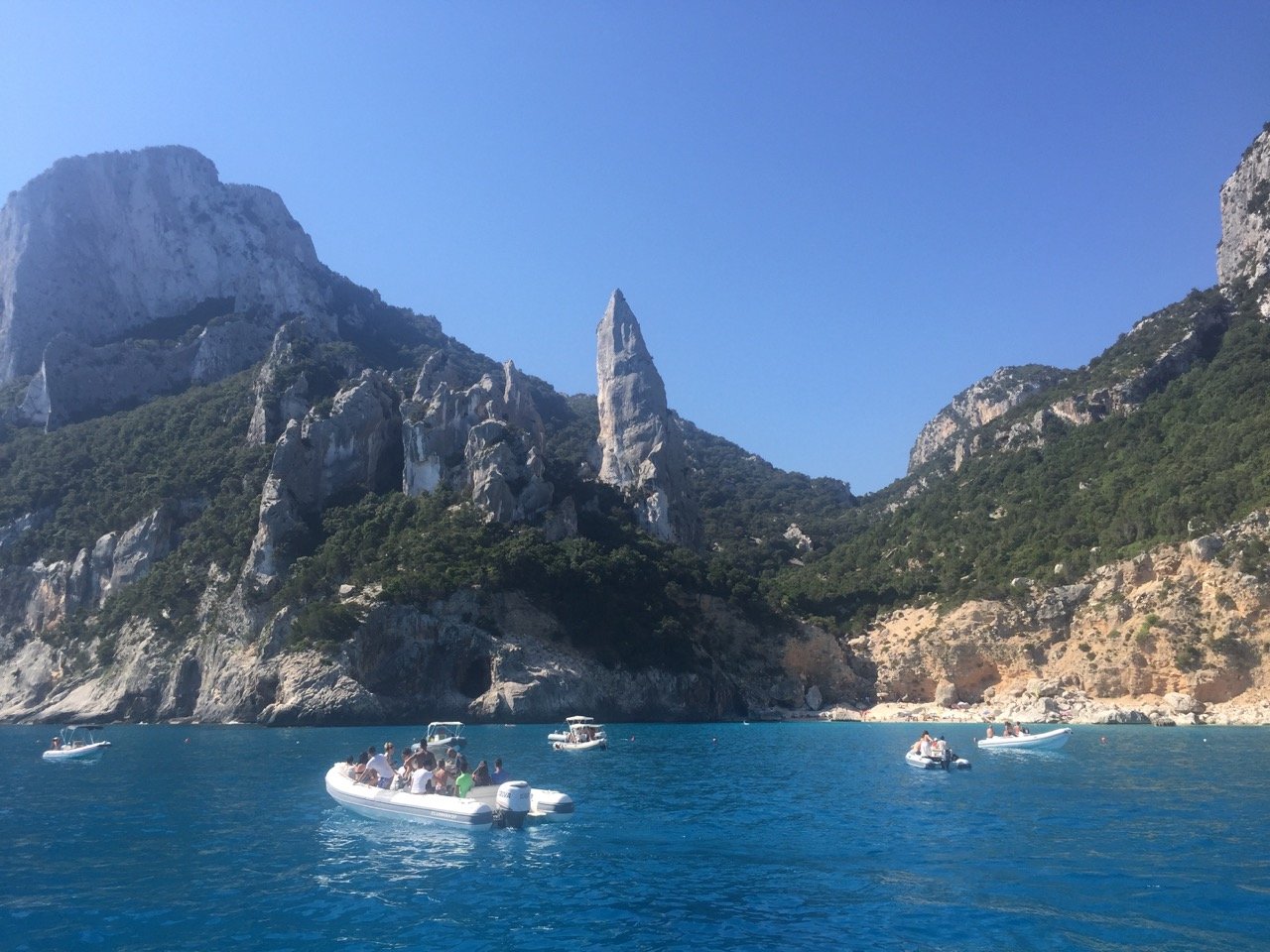
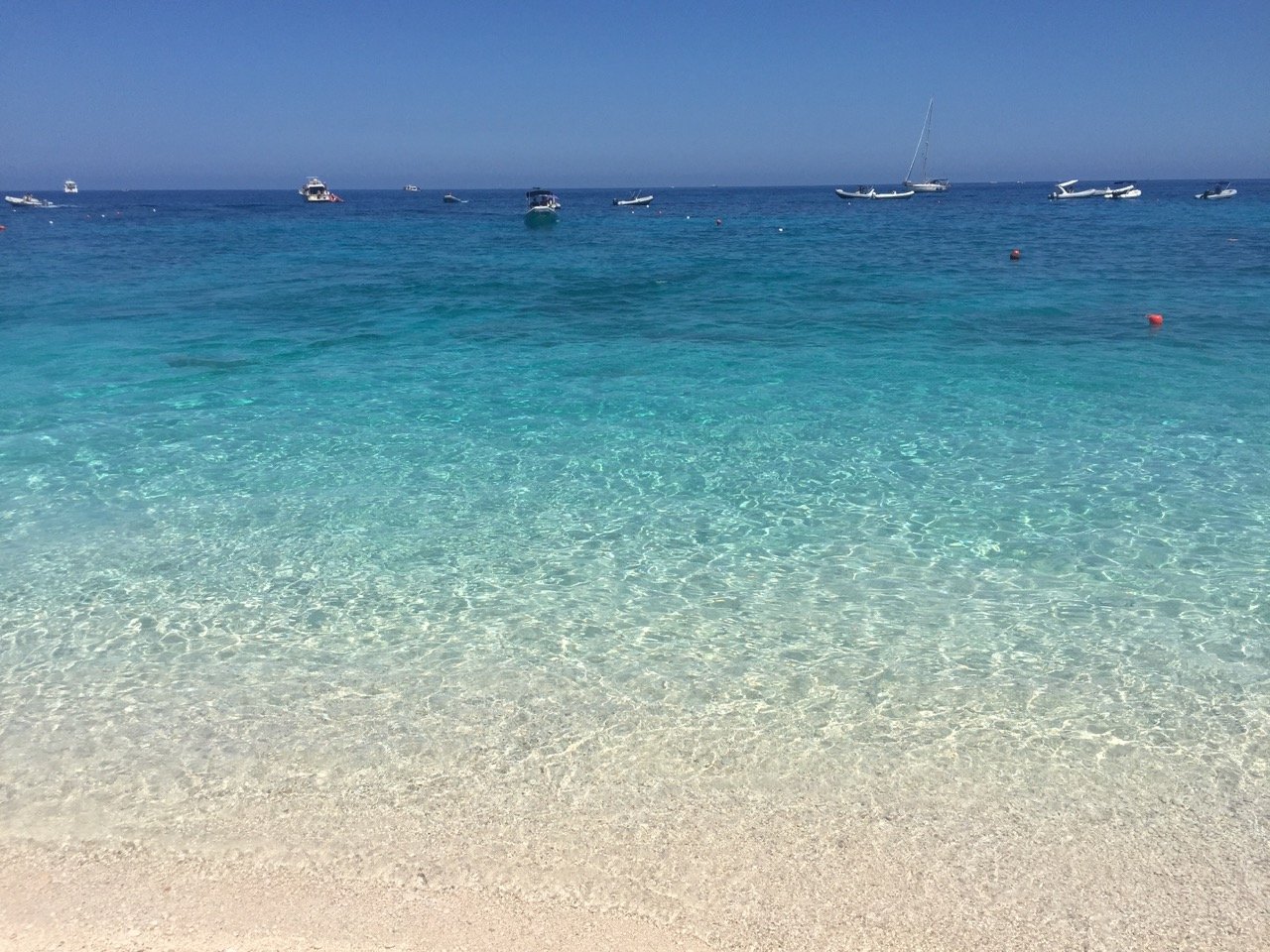
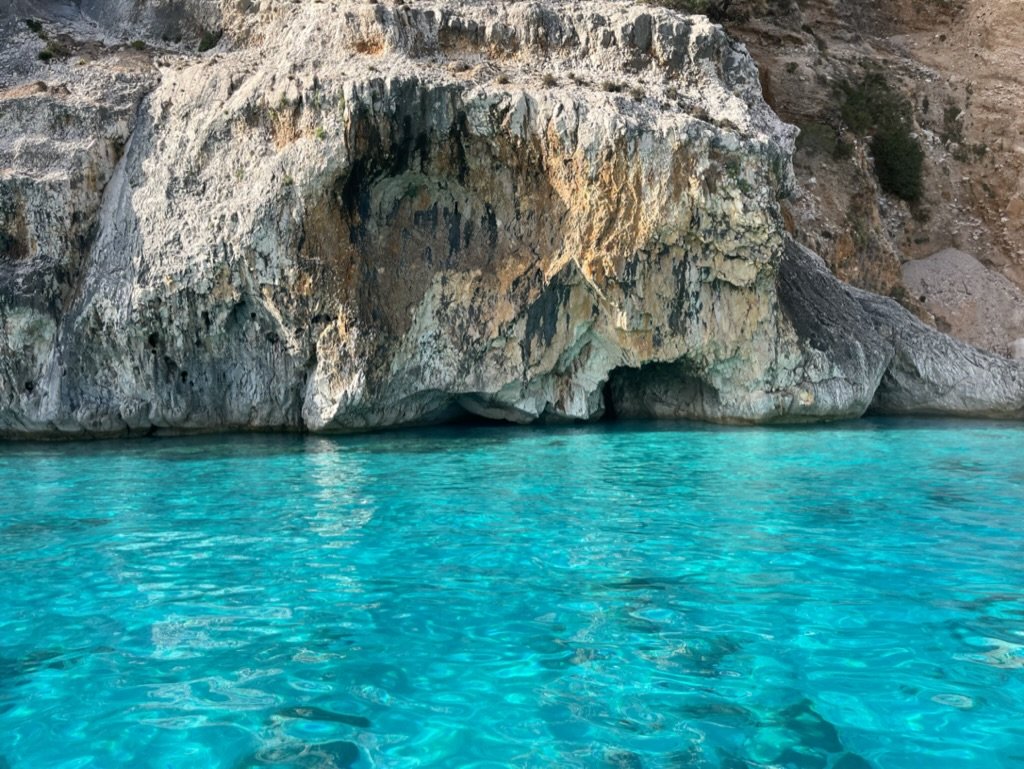
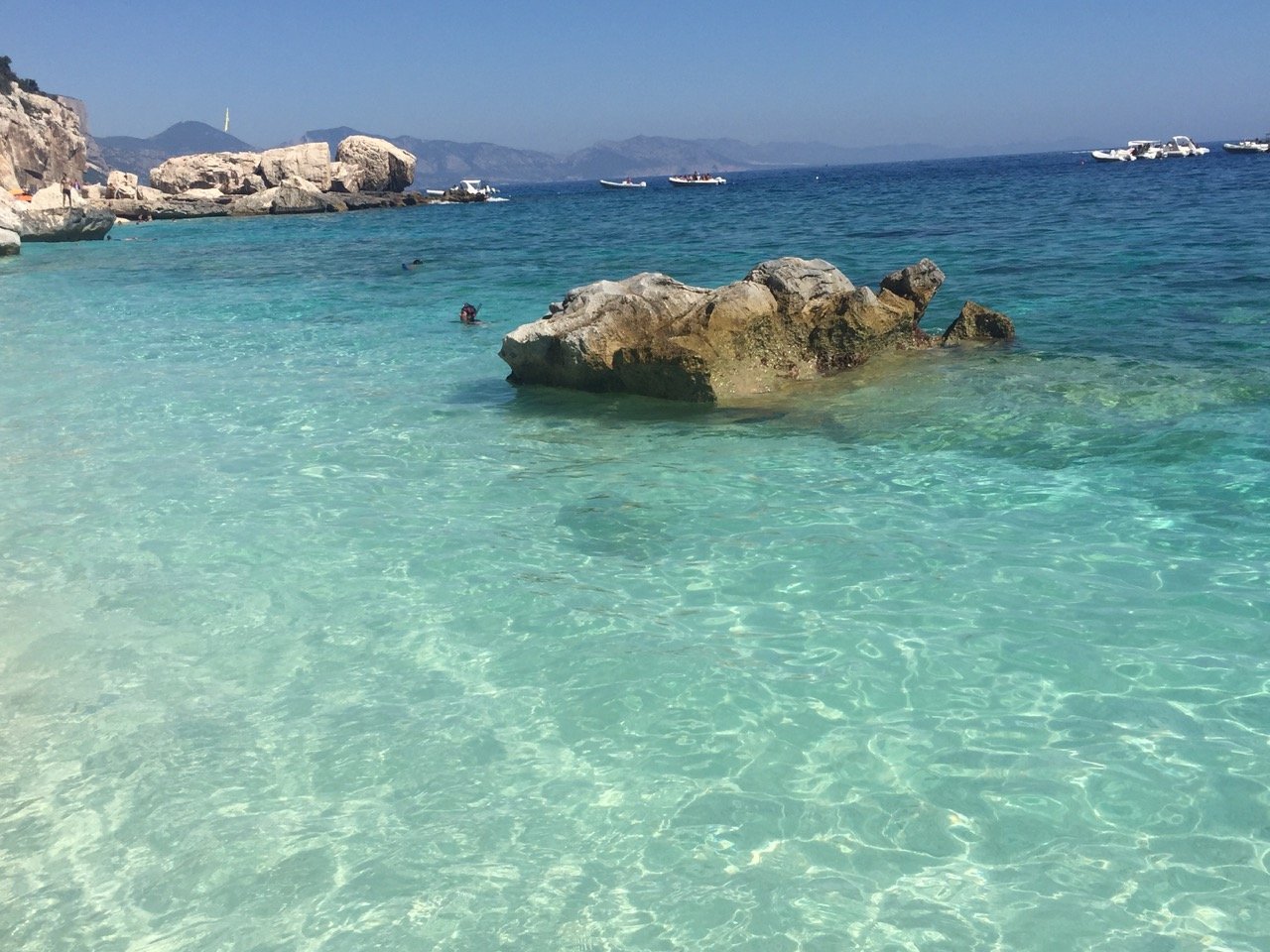


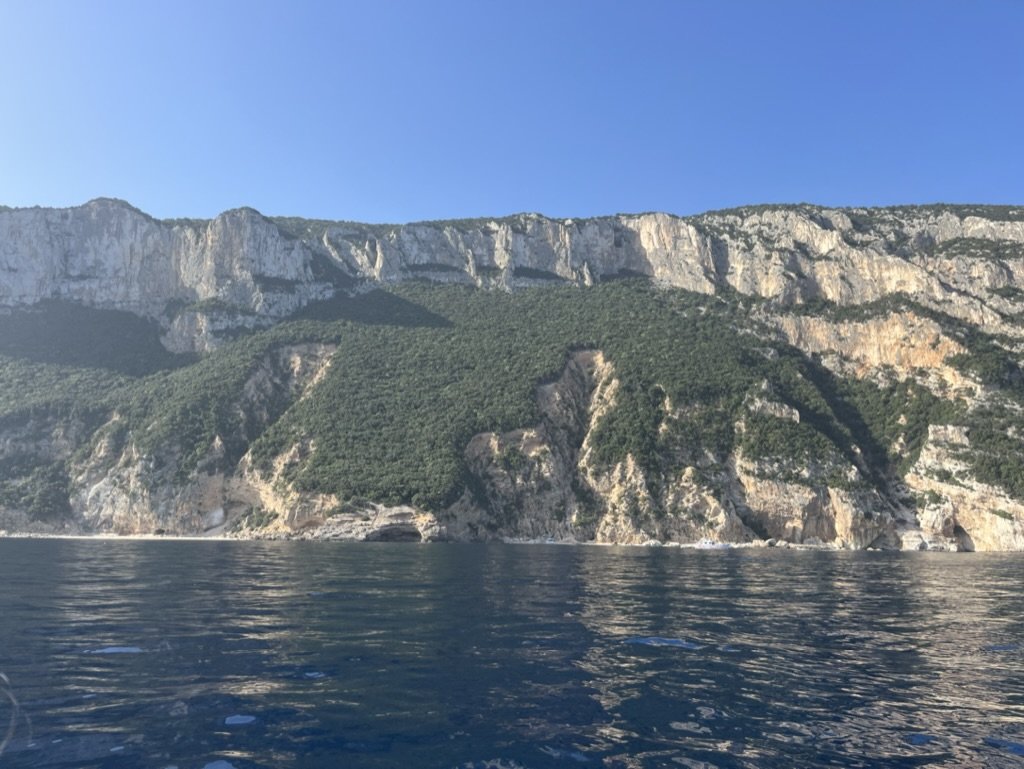
1. La Maddalena archipelago
La Maddalena is a series of islands whose waters are jaw-dropping shades of blue.
Located just off the tip of the Costa Smeralda, and beyond any doubt the location of some Sardinia’s best beaches, barely any foreign visitors went there prior to 2008. This is because it was the site of a major NATO naval base until its closure in that year, and interest in tourism was almost nonexistent.
2. Costa Smeralda beaches
The Emerald Coast is a stretch of beaches to the north of Olbia that runs from Porto Rotondo to Palau. You’ll find charming little coves one after another with huge red rocks on either side forming perfectly calm inlets.
Some of our favorite beaches are: Cala dell’Ulticeddu, Spiaggia Tanca Manna, Spiaggia Piccolo Pevero, Spiaggia del Principe, Spiaggia di Capriccioli, and Cala Petra Ruja.
Read more in my guide to the Costa Smeralda.
3. Wild beaches of Santa Teresa di Gallura
Though far less popular than the beaches of La Maddalena or the Costa Smeralda, there are any number of excellent beaches surrounding the small town of Santa Teresa di Gallura. They’re less protected though and are longer stretches of wide open sands.
These beaches are popular with wind surfers, kite boarders, and even some surfers.
4. Golfo di Orosei (Orosei gulf)
The gulf of Orosei, south of Olbia, has two fabulous long beaches in the towns of Orosei and Budoni. But the real draw are the beaches further south that are only accessible by hiking trail or boat.
5. Cala Gonone
Cala Gonone itself is a tiny fishing town that has now become the capital of rock climbing in Sardinia and Italy. It’s also the best place to either rent a boat or hire a captain for a day of glorious beach hopping in the Gulf or Orosei.
As you hug the coast south of town, you’ll pass one mindbogglingly beautiful beach after another. The fabulous beaches of Cala Mariolu, Cala Luna, Cala Goloritzé, Cala dei Gabbiani, and Cala Sisine, most of which are only accessible by boat, are some of the best in Sardinia.
Discover more of the island’s best beaches in my guide to Sardinia’s best beaches.
Best places to visit in Southeast Sardinia
Southeast Sardinia is much less visited than the two regions in the north and its appeal is different. The region is most easily reached from the capital city of Cagliari whose airport is the best connected on the island and offers the most daily flights.
This part of the island is extremely sparsely populated, with no major urban centers. The largest towns in the area are places like Arbatax and Santa Maria Navarrese, two sleepy towns that get busy over the summer with vacationers. The other larger town, Muravera, is an inland agricultural center that doesn’t have much tourism draw.
Beginning to the south of the port town of Arbatax (just at the end of the Gulf of Orosei), the beaches are sandy and unspoiled, with almost no development near them. The beaches of Orrí, Cea, and Bari Sardo are particularly lovely and various of them have received Blue Flag designations. This part of Sardinia is within the province of Ogliastra.
Further south, the coastline becomes rocky and inaccessible in places until you reach the promontory of Capoferrato and the resort towns of Villasimius and Costa Rei.
Villasimius and Costa Rei are essentially one long stretch of sandy beaches with a few towns, resorts, and hotels built up behind them. The beaches outside of both towns are excellent, though they are extremely busy in the summer months and on weekends. This is a favorite weekend beach trip for Cagliari locals, many of whom have second homes in the area.
Heading in the direction of Cagliari, you have good hiking opportunities in the Sette Fratelli park and one of my favorite beaches, Mari Pintau.
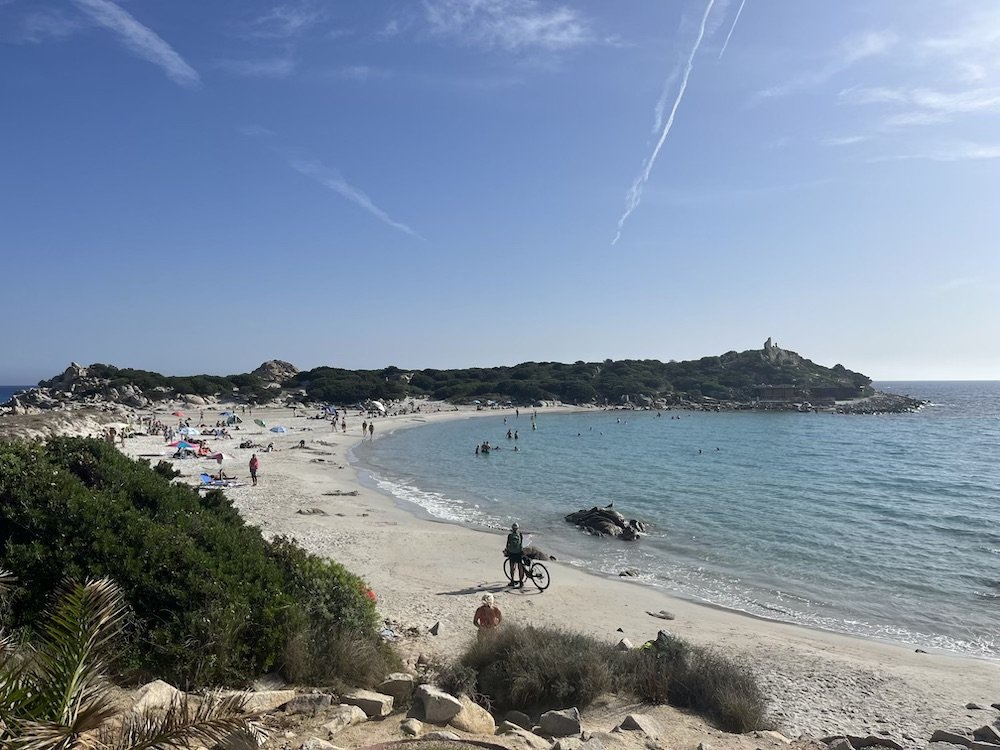
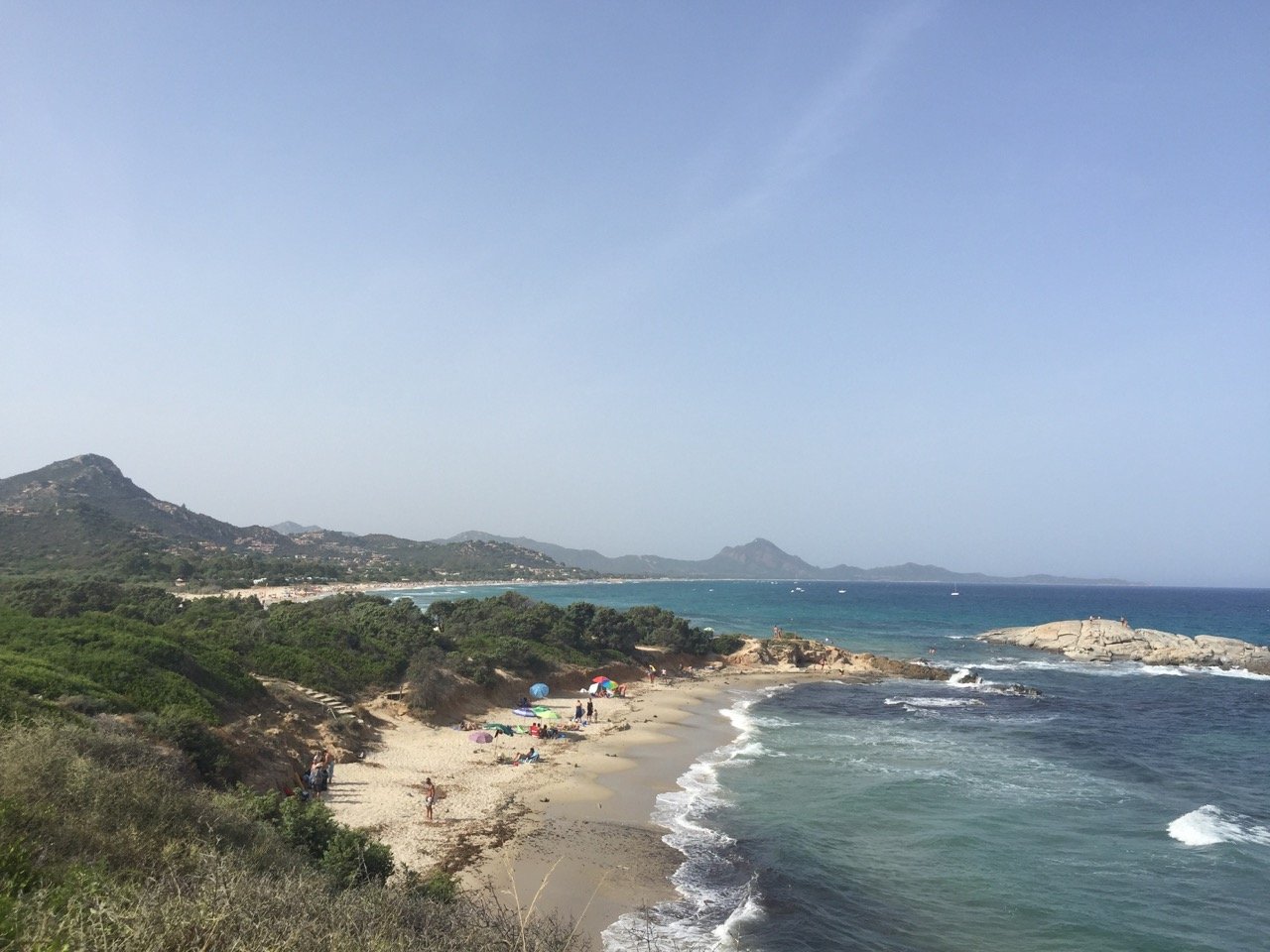
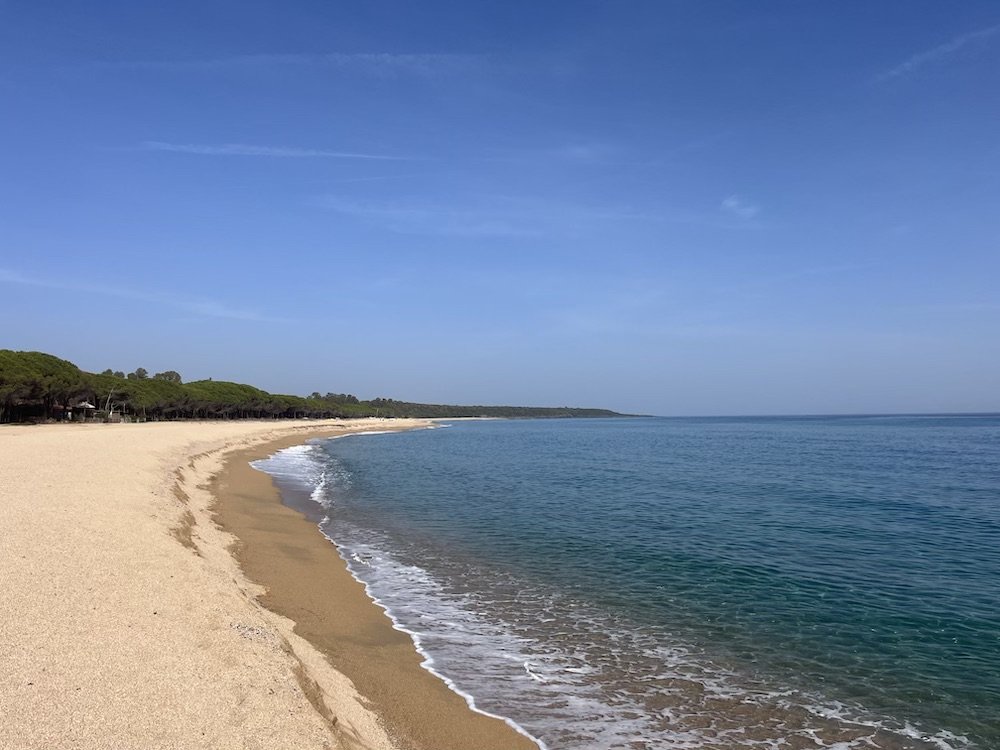
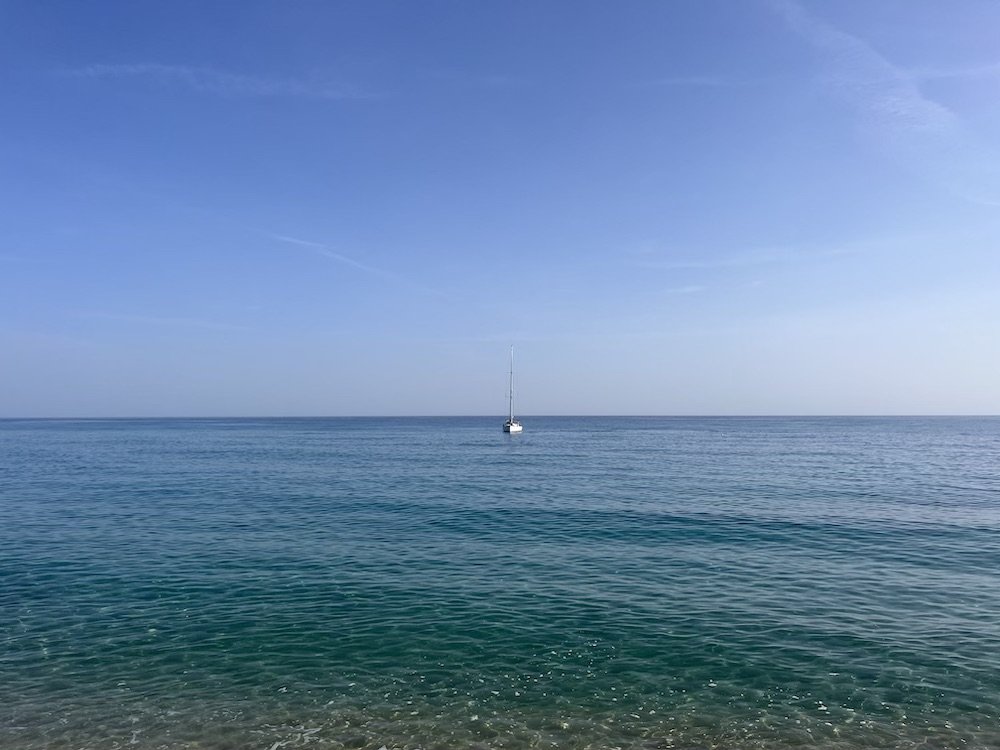
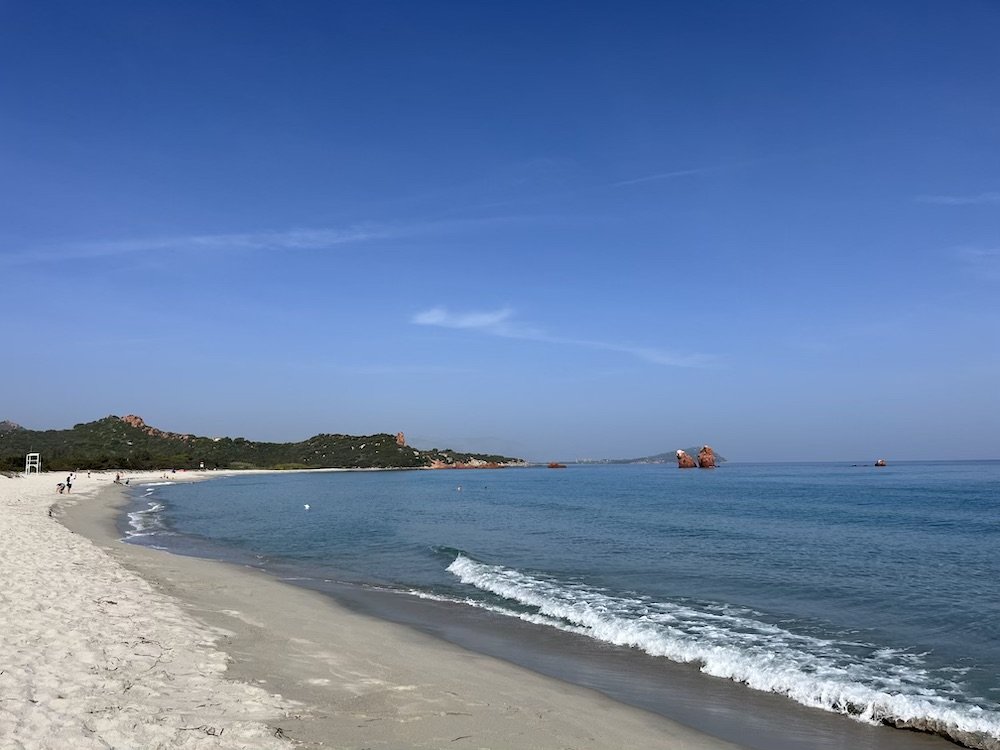
1. Cea beach
Spiaggia di Cea is a Blue Flag-designated beach south of the town of Arbatax. It’s a long strip of white sand with some very neat red rock formations jutting out of the water. The beach is shallow and calm, making it great for kids. There’s lots of parking just behind the beach.
2. Orrì beach
Spiaggia di Lido di Orrì is another fantastic Blue Flag-designated beach about 10 minutes’ drive from Cea beach. The composition is almost identical. It’s equally fabulous.
3. Beaches of Bari Sardo
Bari Sardo is a little down just south of the beaches of Orrì and Cea and makes for a decent base for visiting the beaches of the area. It has it’s own beach at Spiaggia di Torre di Bari which is a wide and extensive beach which is made up of tiny little pebbles instead of sand.
It’s different from Cea and Orrì in that the water becomes deep immediately, so it’s great for people who like to swim without having to wade out hundreds of meters! Not nearly as famous as other neighboring beaches, it also never gets crowded.
4. Villasimius & Costa Rei
South of the Capoferrato promontory and only a 1-hour drive from the city of Cagliari, Costa Rei and Villasimius are two of the most popular beach areas in southern Sardinia.
On weekends throughout the summer season, the beaches are filled with vacationing tourists and locals coming for the day from Cagliari and nearby towns. The area is one of the most developed beach destinations in southern Sardinia and there are resorts, hotels, private villas, and camp grounds all around.
The beaches here are wide, sandy, and well-serviced; you have beach kiosks, restaurants, and water sport rental facilities directly on the sand. The town of Villasimius itself is uninteresting, but it has all the amenities you could need for a multi-day stay.
For those who prefer wild beaches, it probably won’t be your cup of tea and you should certainly avoid the area during high season.
5. Sette Fratelli Park
Sette Fratteli park is about 35 minutes from both Cagliari and Villasimius. It’s a beautiful preserve on a small mountain that contains dense forest and lots of good hiking trails.
The old strada provinciale road that leads there from Cagliari is a really beautiful drive (or bike ride) as well.
6. Mari Pintau beach
Mari Pintau is a small rocky beach 40 minutes from Cagliari. It’s one of few beaches that can be easily reached with public transport from the city. Mari Pintau in the Sardo language means “painted sea” and the name was given because the many rocks on the beach and seabed are all different colors. It’s quite lovely.
The beach has no services on it, but the trail that leads to it from the roadside has one kiosk that is open in the summer. Parking is along the road and very limited, so if coming in high season, get here early.
Best places to visit in Southwest Sardinia
Southwest Sardinia is the island’s least-visited region, but it shouldn’t be! It boasts fabulous nature, great beaches, archeological sites, and lots of history. On top of that, it’s easily reachable from Cagliari and the city’s Elmas airport.
This is also the part of Sardinia that I’m from, so I suppose it’s no great surprise that it’s my favorite! So, what’s there to see here? Too much!
Cagliari, Sardinia's capital city, is worth at least a day of your time, and a few more if you want to use it as your base for exploring beaches are sights nearby.
The towns of Chia, Pula, and Santa Margherita are all cute, and they have terrific beaches near to them like Cala Cipolla, Su Giudeu, and Sa Colonia. You also have the excellent archeological site of Nora that is worth visiting for its wonderful location even if you have no interest in history.
Moving towards the town of Teulada, you have the fabulous beaches of Tuerredda, boat trips to hidden bays like Porto Zafferano, and more beaches like Piscinnì and Porto Pino. There are too many to list.
Continuing along the coast takes you to the lovely islands of Carloforte (Isola di San Pietro) and Sant’Antioco, which are quite unique.
Then, as you head north, you’ll hit the Costa Verde, a stretch of coast that is wilder than anywhere else in Sardinia. Here, mountains and cliffs rise for a long stretch, broken occasionally by lovely sandy beaches. Eventually, the mountains given way to flatter ground and vast coastline, much of it covered in massive san dunes. With few towns in this part of the island, even in summer you’ll find these beaches fairly empty. These are beaches for nature lovers and fans of solitude.
Both in present day and in antiquity, this area was one of the most populated in Sardinia. For visitors, this means that you have the chance to combine visit to lovely towns and fishing villages with ancient history and ruins and beach lounging.
If you consider staying in this area, have a look at my 7-day South Sardinia itinerary.
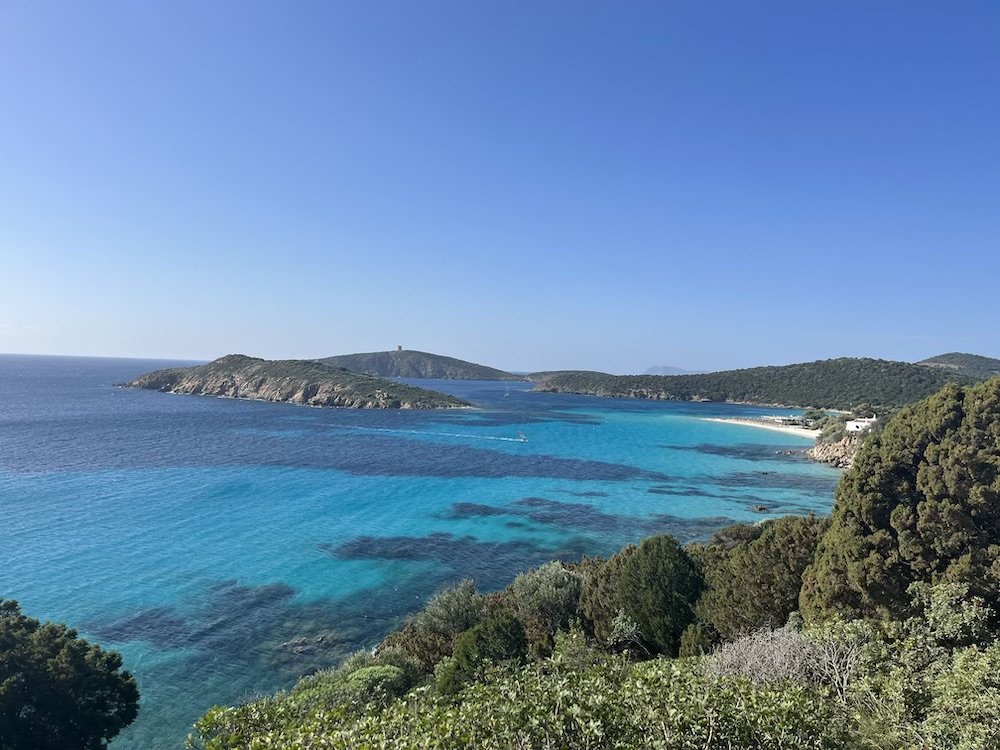
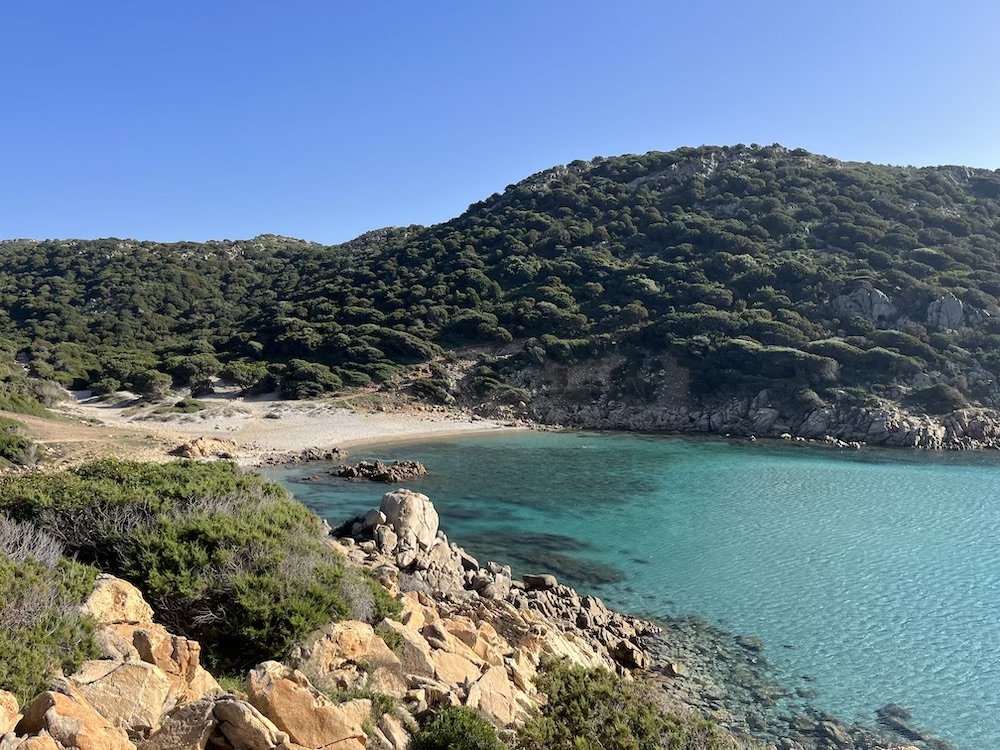
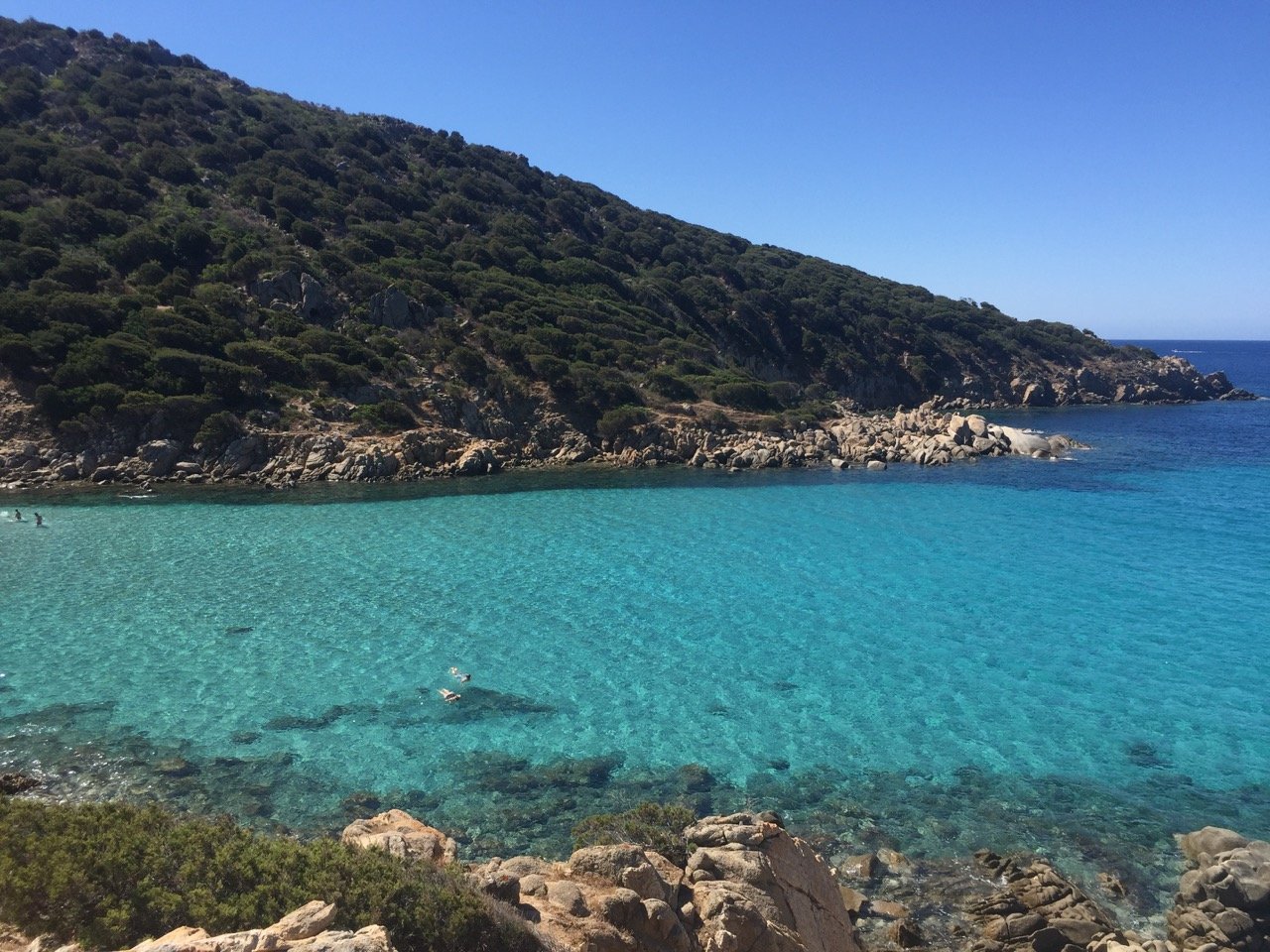
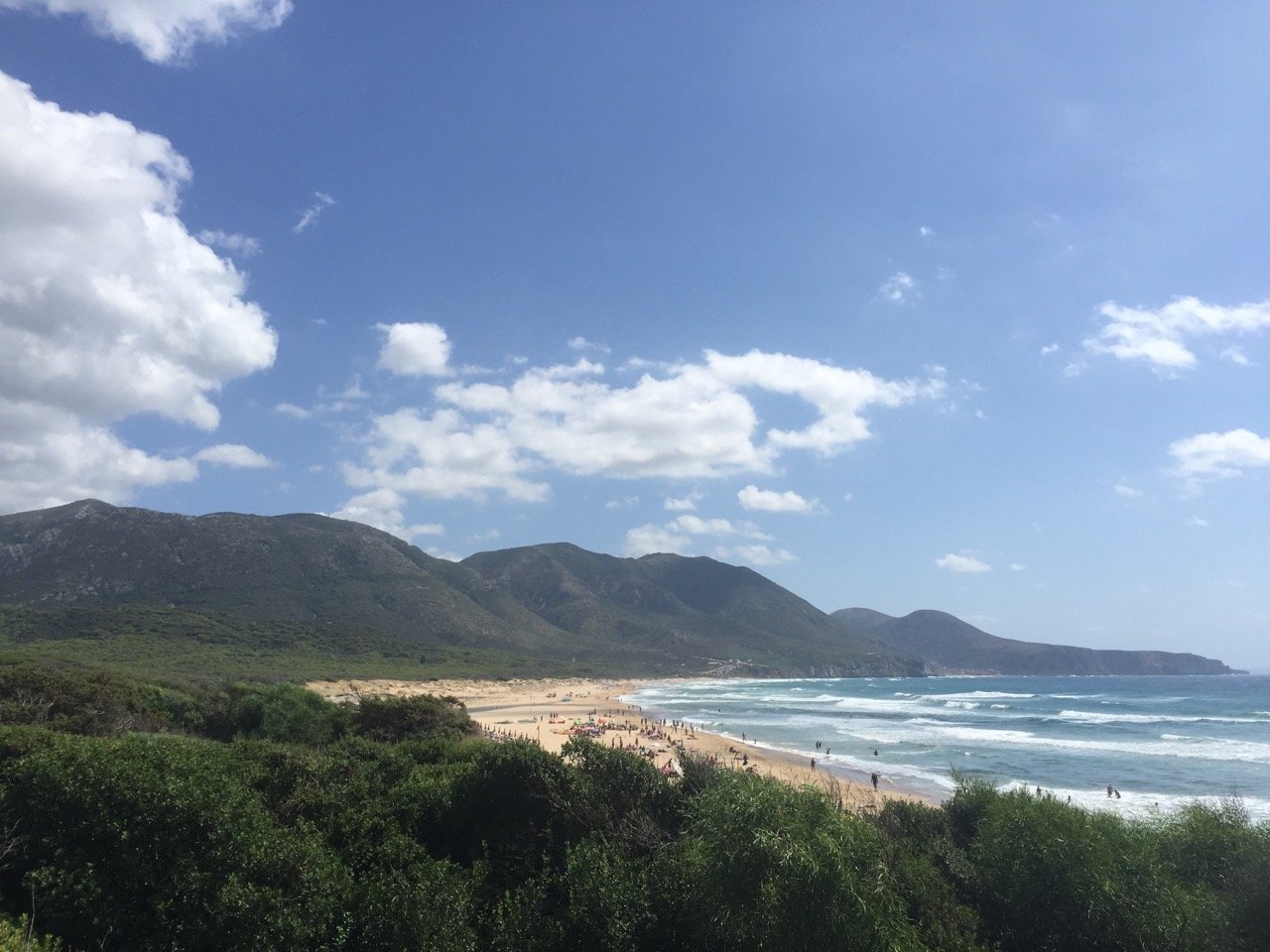
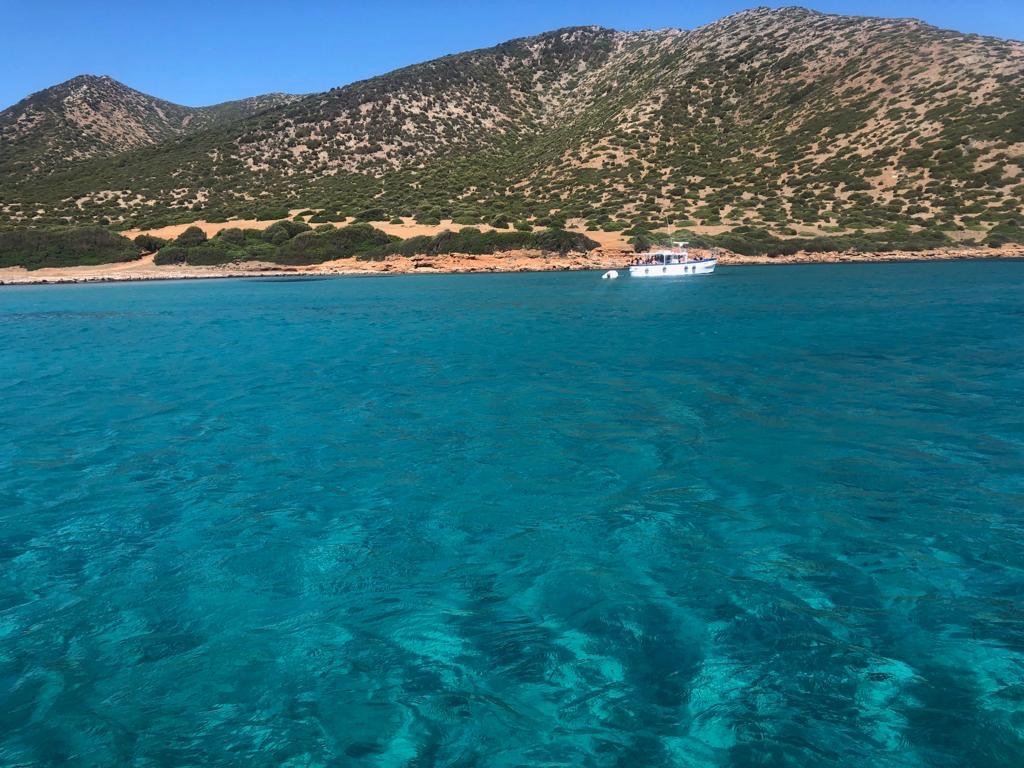
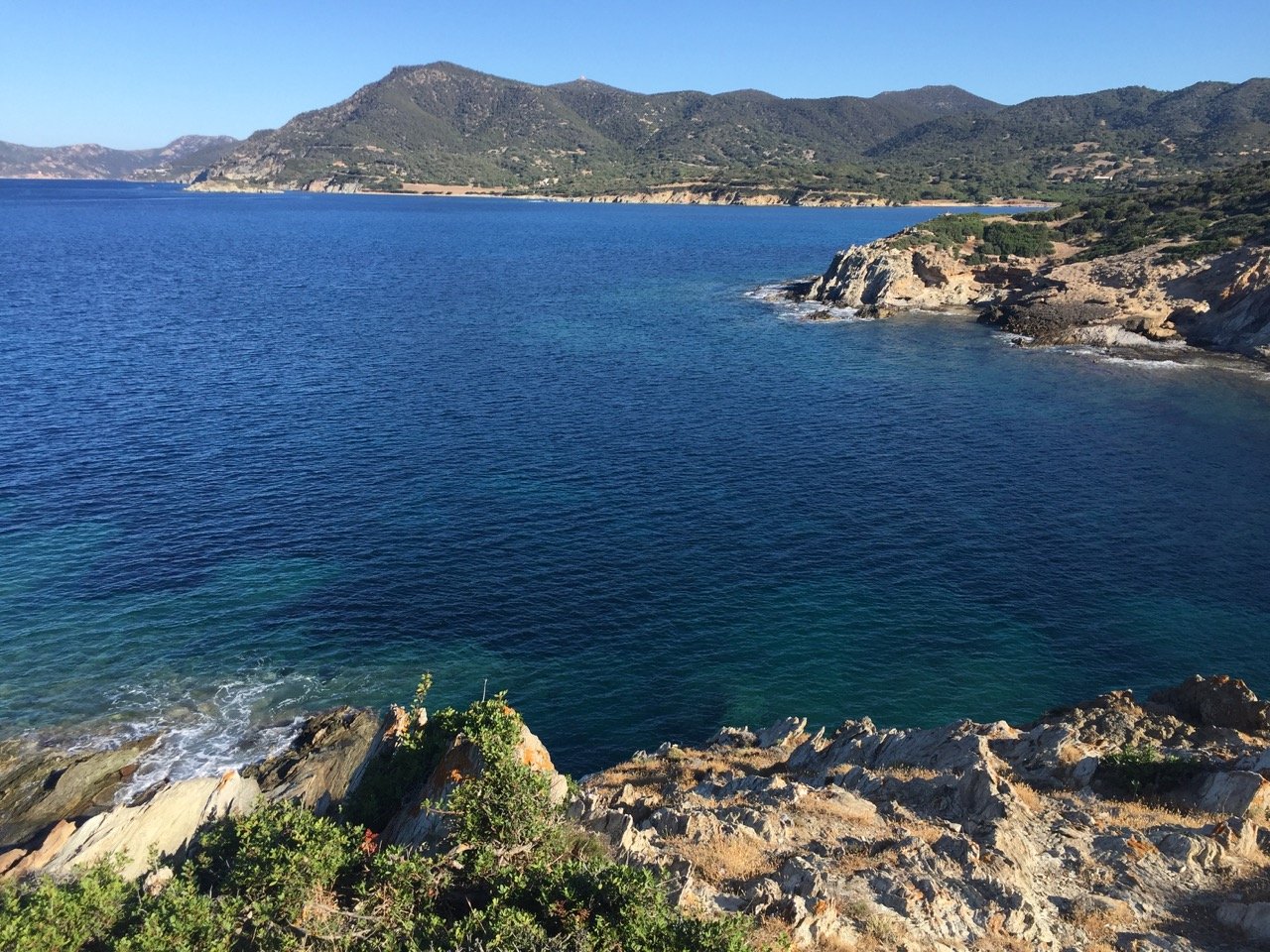
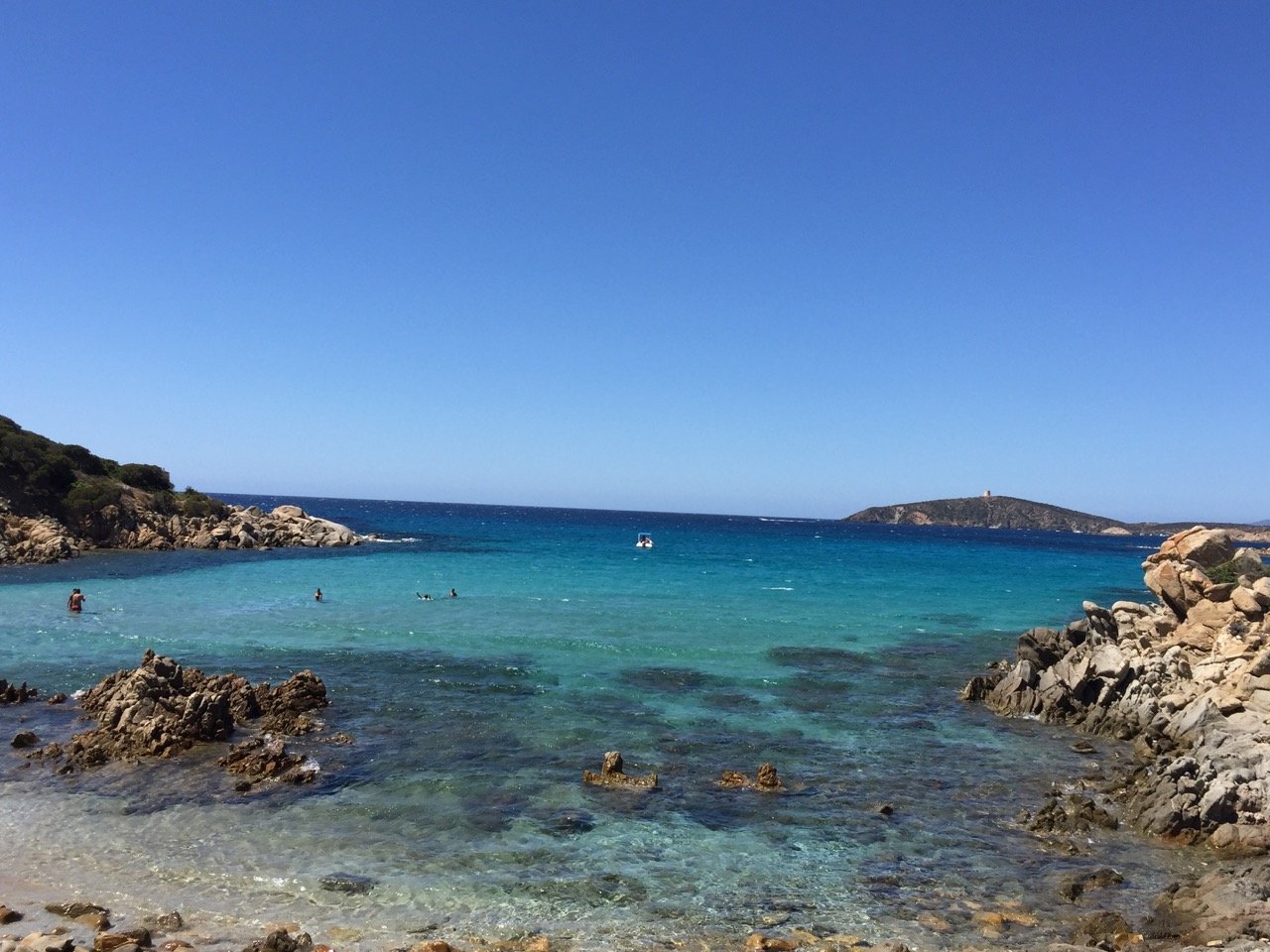
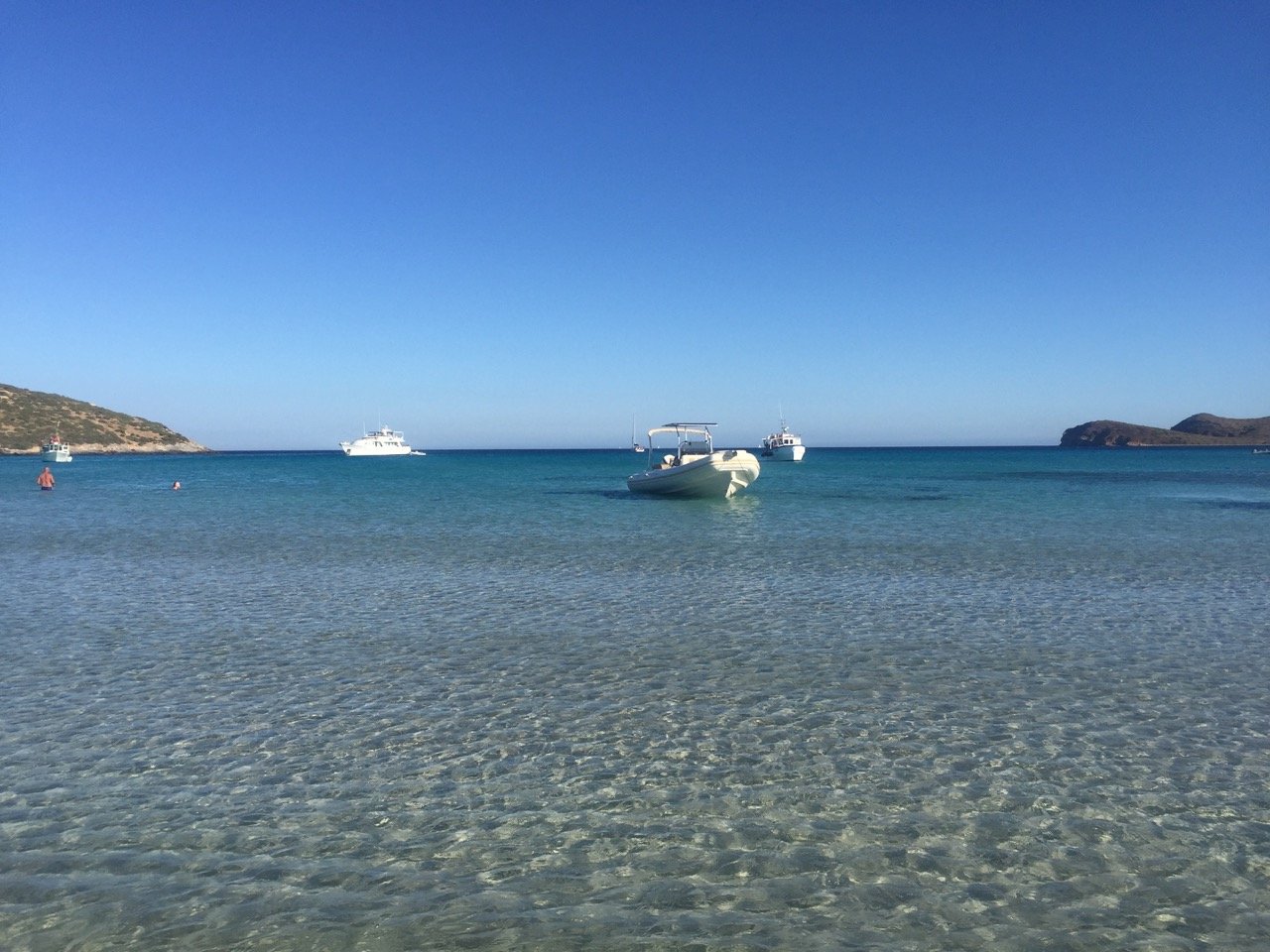
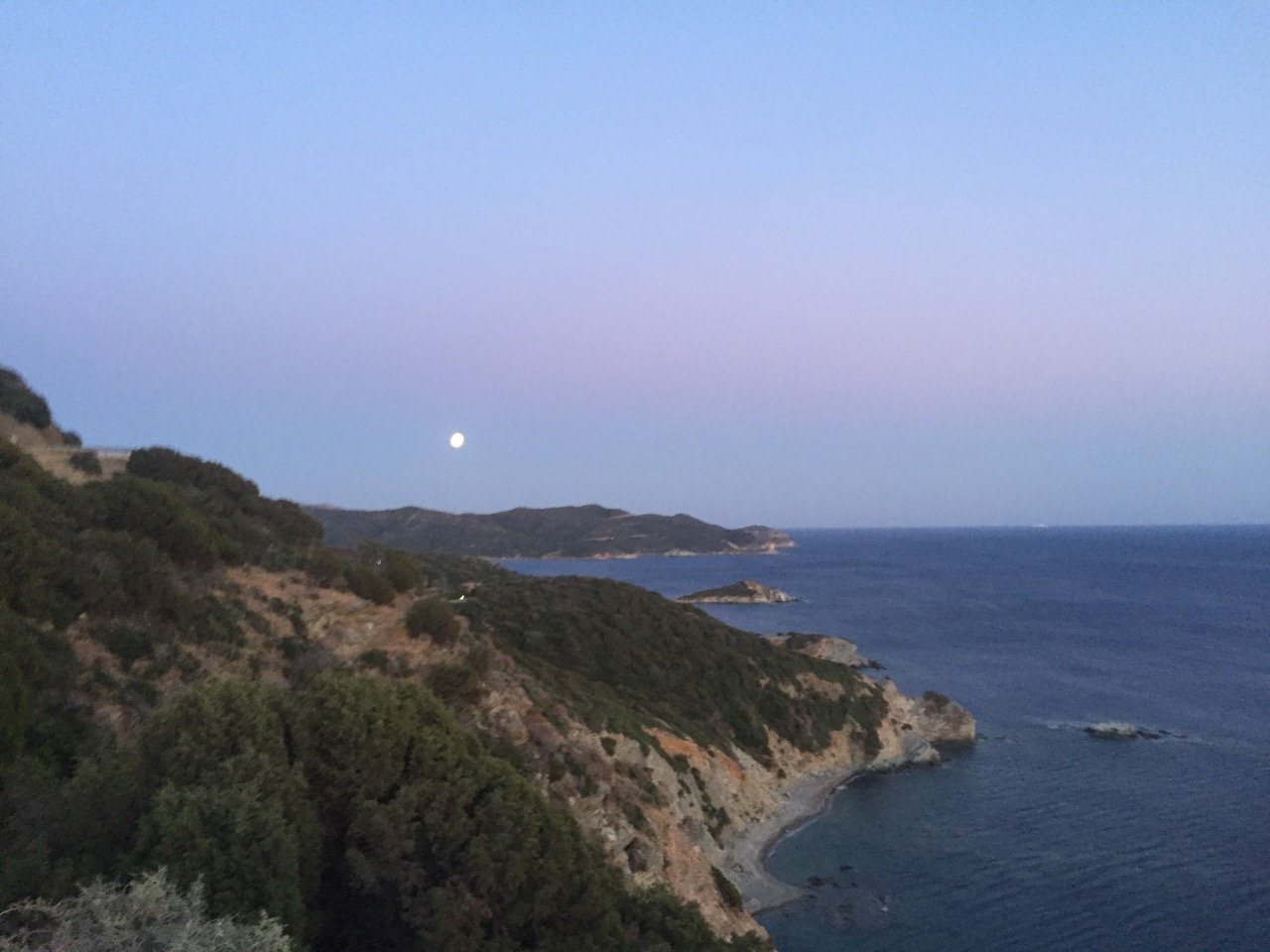
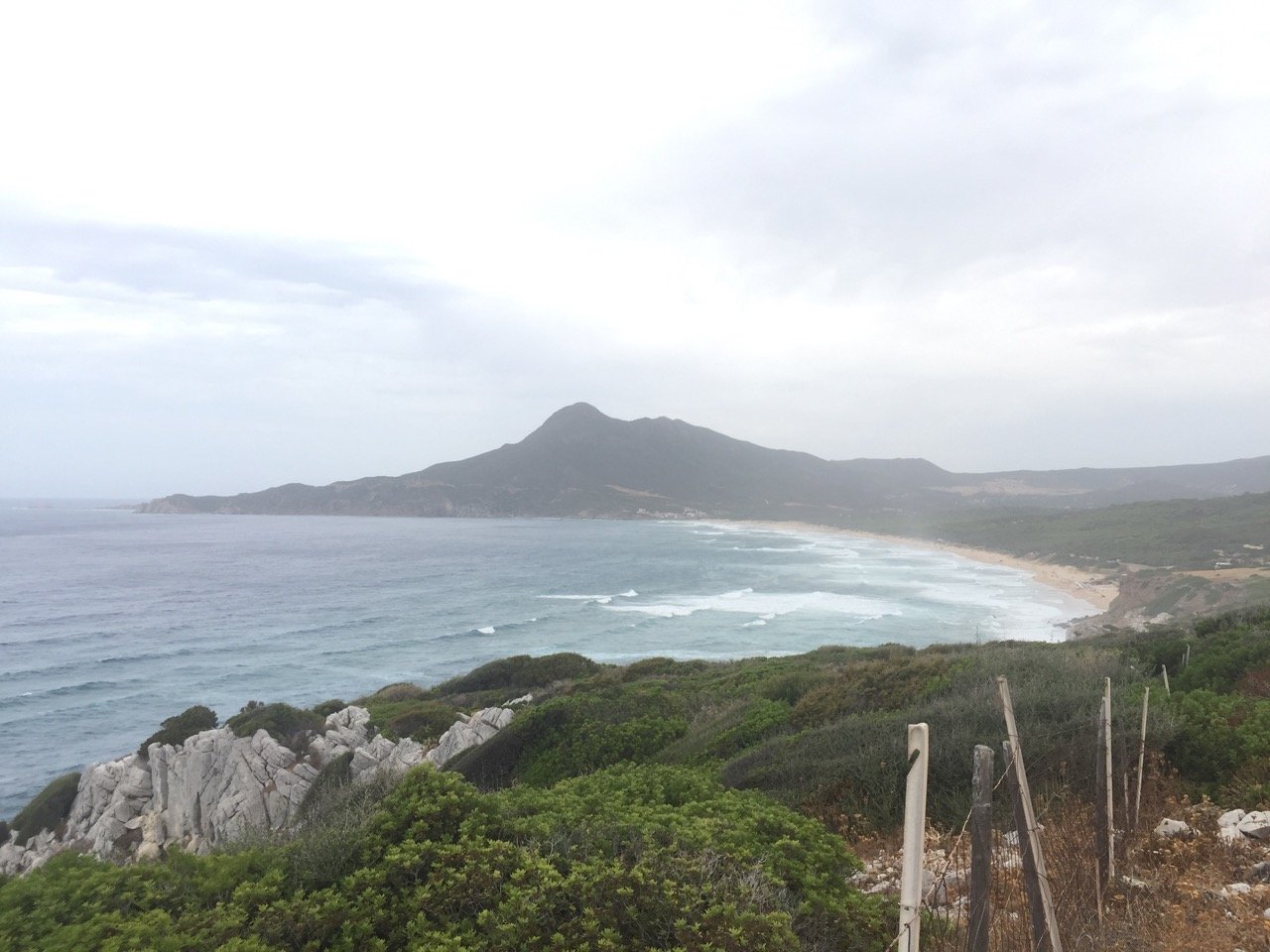
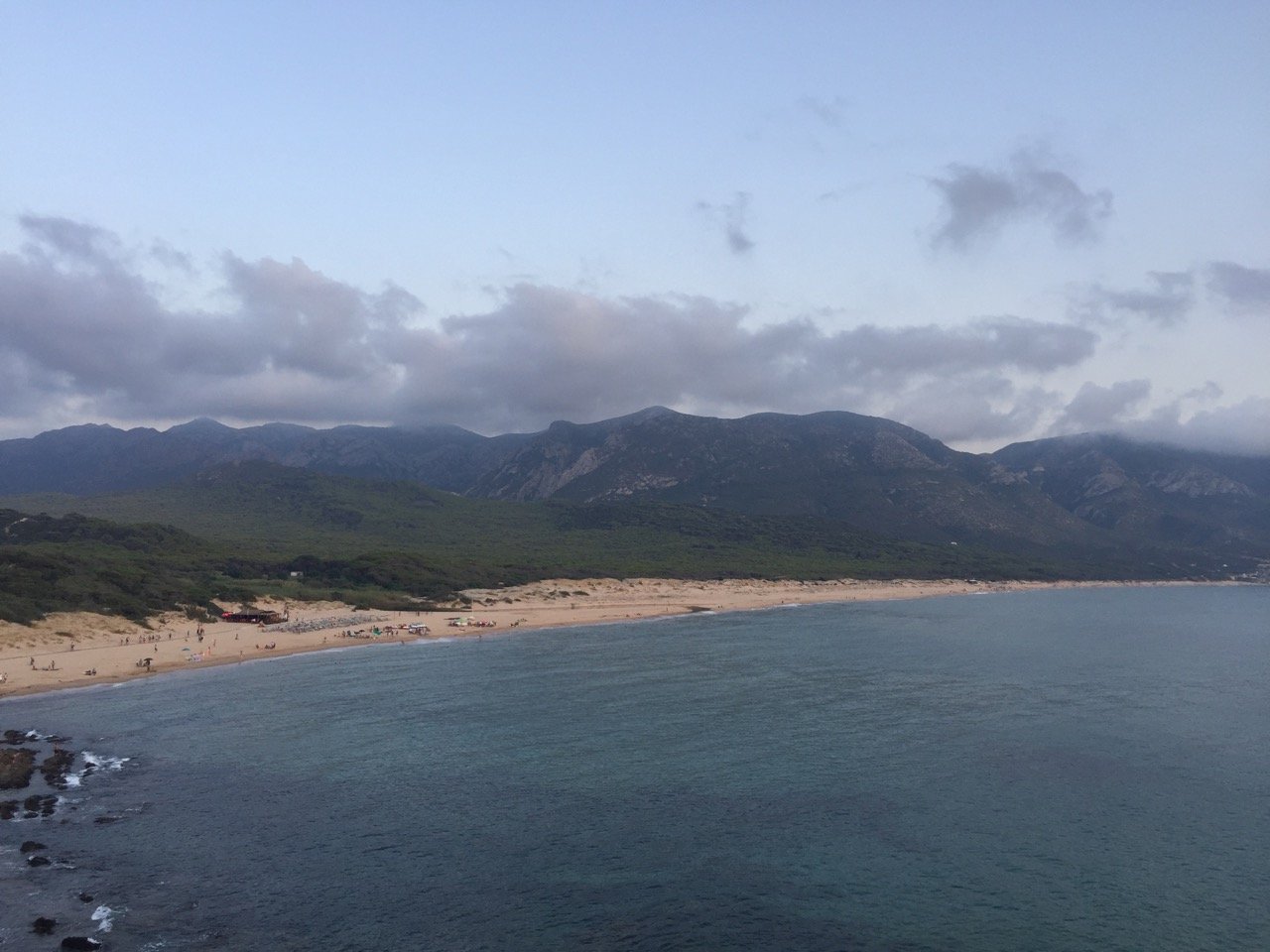
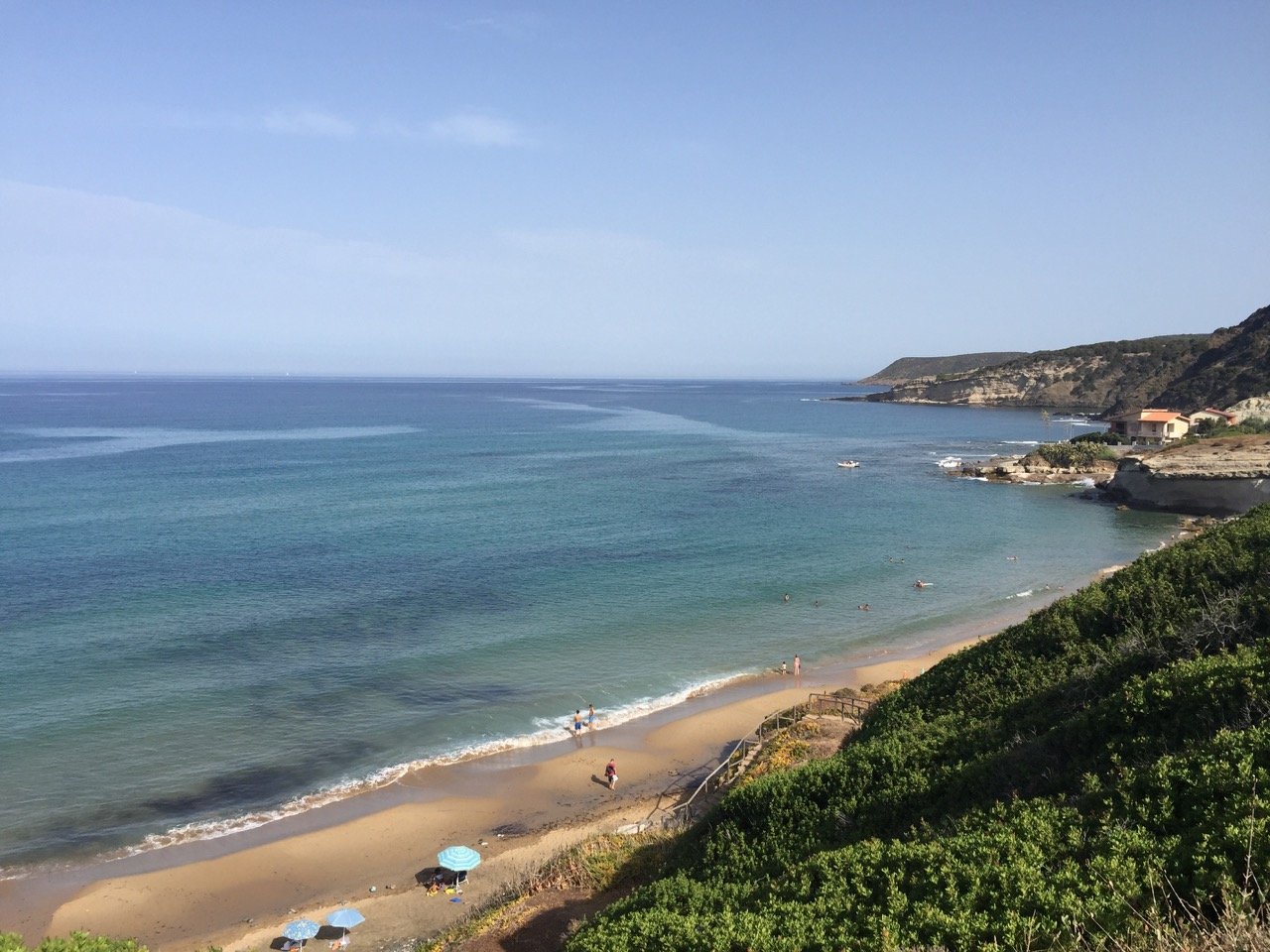
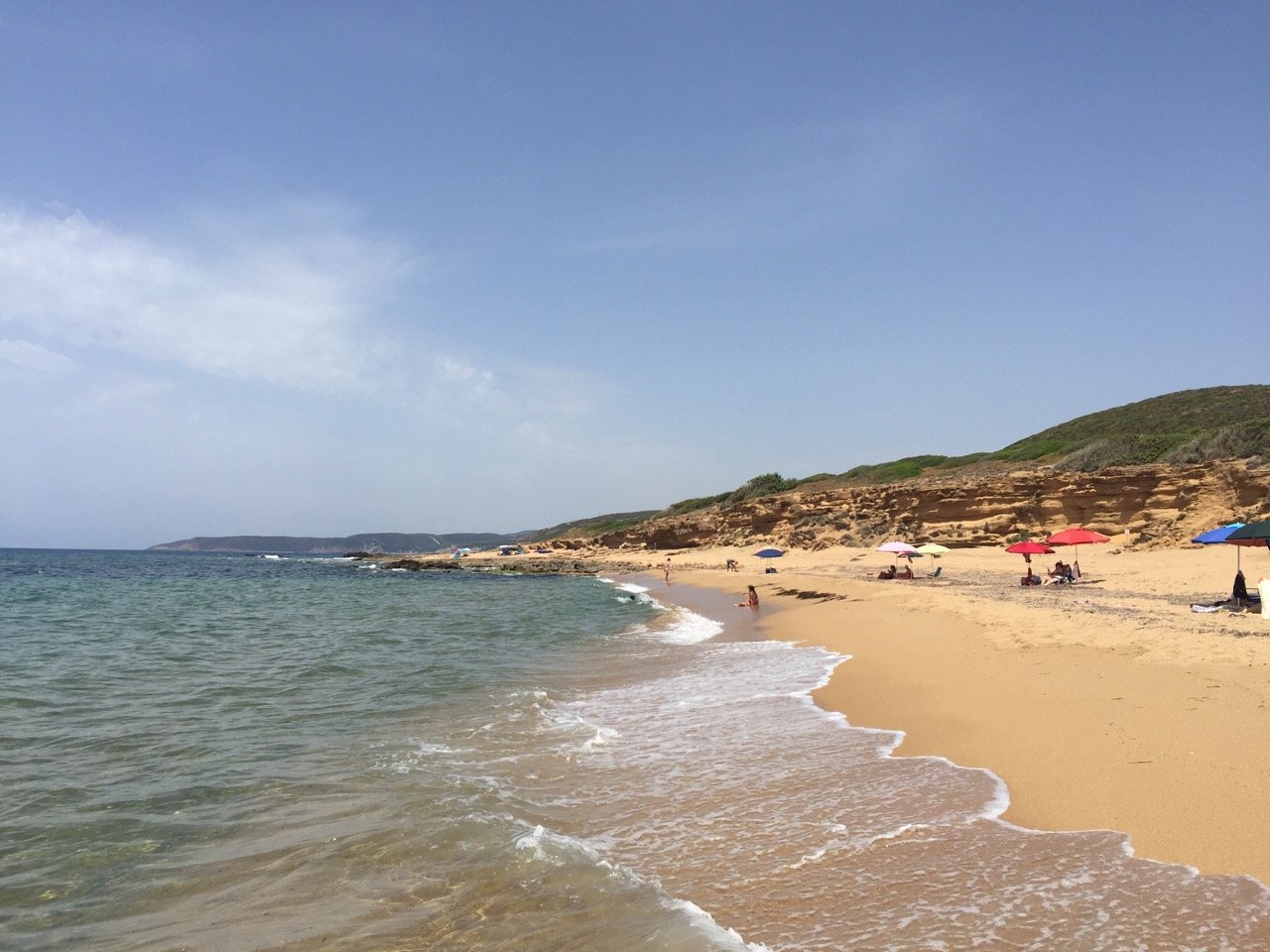
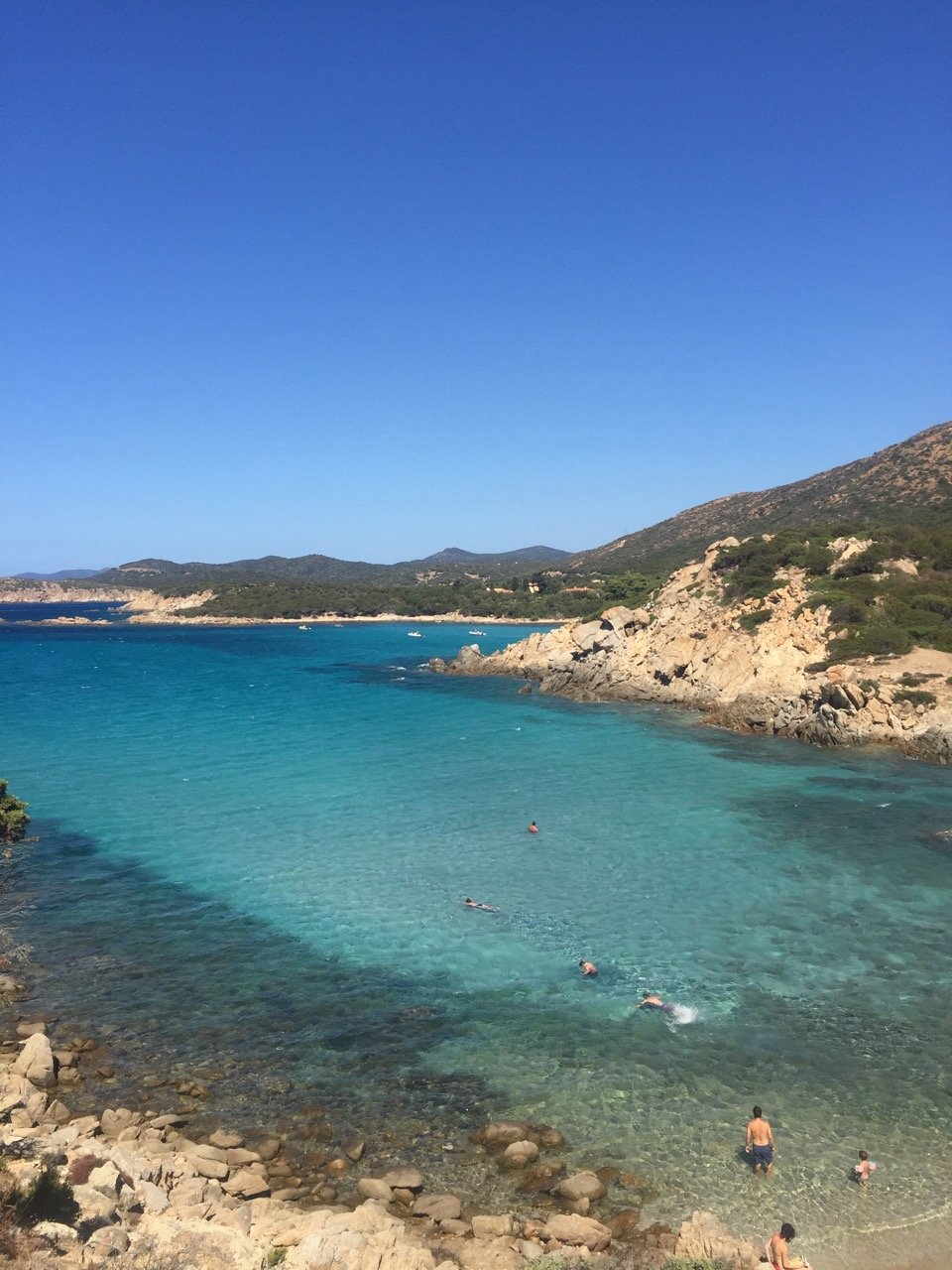

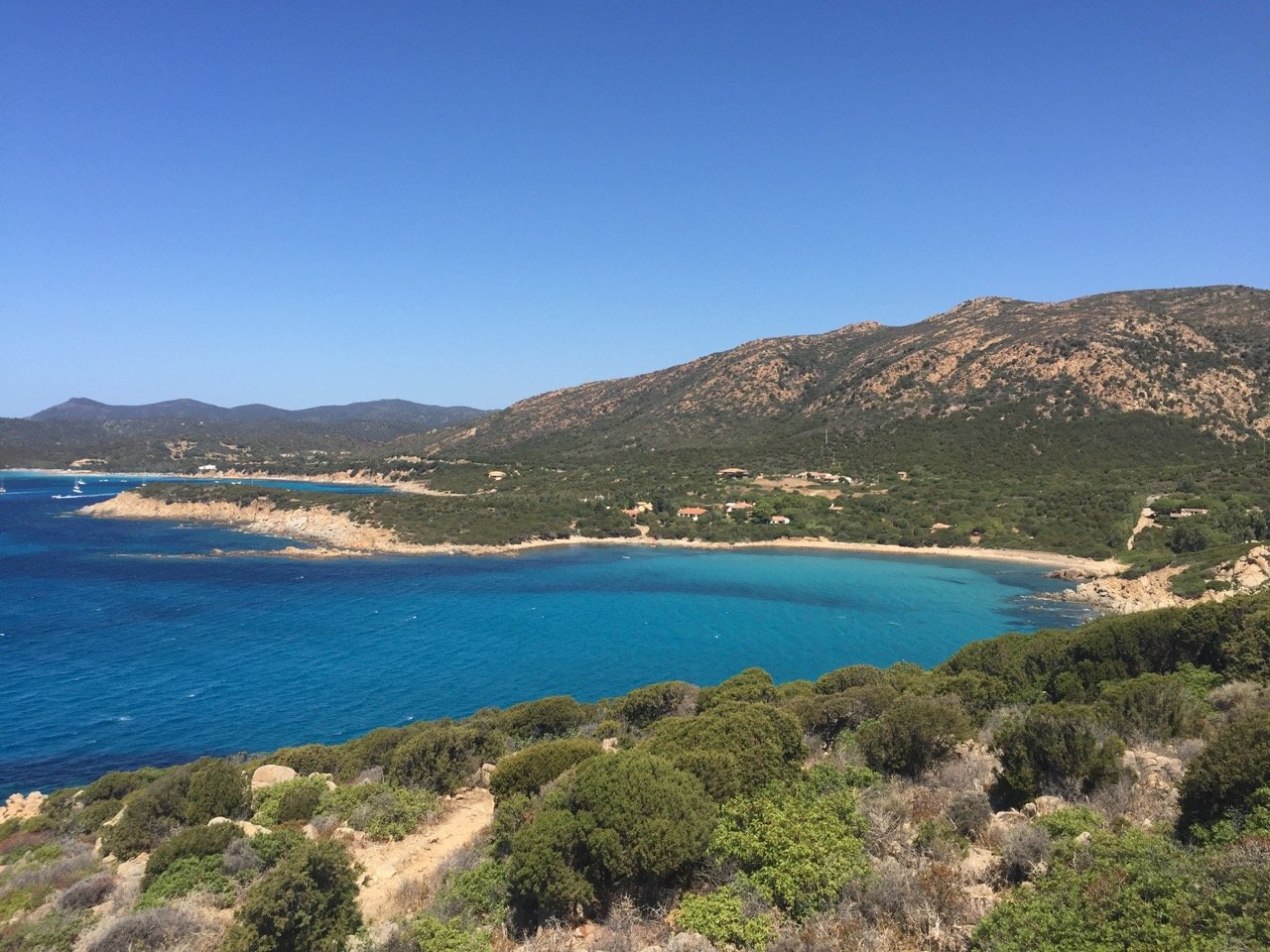
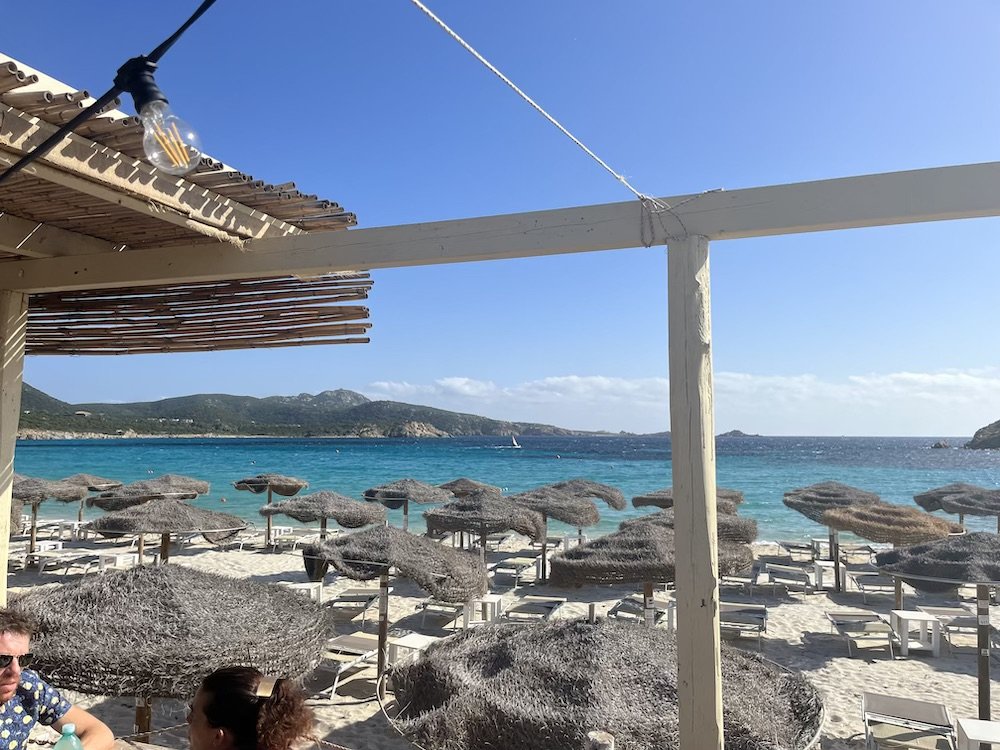
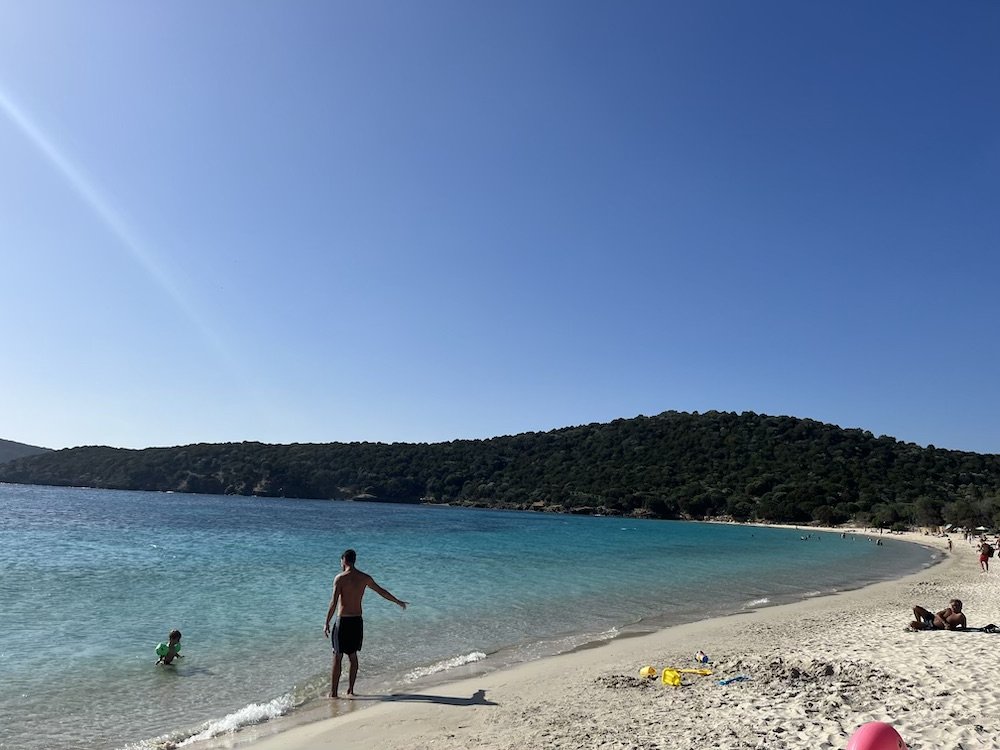
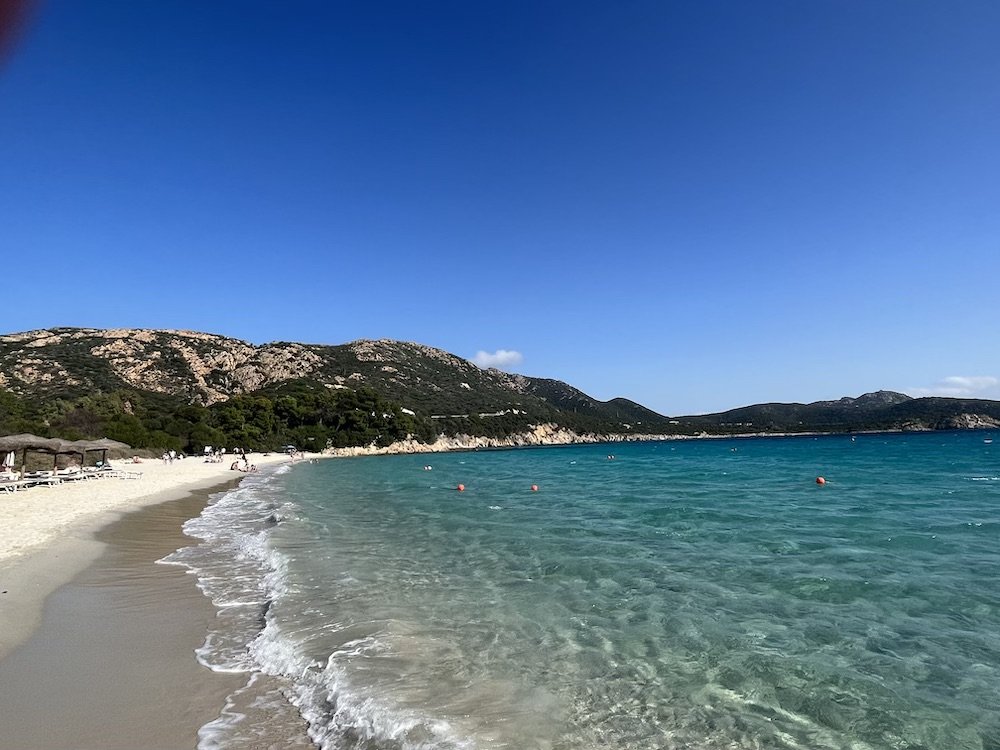
1. Cagliari
Cagliari is the capital of Sardinia and it’s largest city. It’s a busy town of 150,000 people and a good base for exploring south Sardinia.
There’s not much left of historic Cagliari, but the marina and waterfront are pleasant to walk, the urban Poetto beach is one of the best city beaches in the world, and the historic districts of Stampace, Villanova, and Castello are very atmospheric.
For more info, check out my guide to Cagliari.
2. Chia beach
Chia and Pula are hands down two of the most famous beaches in southern Sardinia. The area is also home to the enormous 4-star Forte Village resort. In high season, do be aware that almost all of the beaches between Cagliari and Chia/Tueredda are extremely crowded.
The beaches have powdery white sand, gently deepening waters, and all manner of restaurants, bars, and beach facilities a few meters from the water.
3. Tuerredda beach
One of our favorite beaches on the entire island, Tueredda is a triangular beach whose two sides face Tueredda island. The colors here are extraordinary and perfectly stratified. In our opinion, it’s one of the most striking beaches anywhere in Sardinia. We only visit in the spring or fall as it can become overrun in high season.
4. Nora archeological site
Nora is an excellently preserved site of Phoenician and Roman ruins dating back thousands of years. The location, right between the fabulous beaches of Chia/Pula and Tuerredda, is perfect for a stop while beach hopping.
Even when ignoring the incredible evidence of over 2,000 years of human history here, the location alone is stirring; Phoenician and Roman ruins lie on a little promontory with lovely views of the turquoise waters that lap its shore.
5. Porto Zafferano and Teulada beaches
The small town of Teulada is an inconspicuous place and it rarely pops up on lists of Sardinia’s best beaches. But… if you know, you know.
The nearby coast was off limits for many years because it was used by the Italian navy and NATO for naval exercises, drills, and even to practice shelling. The naval base is now closed, but its presence means that the surrounding coastline is entirely undeveloped with untouched beaches and pristine waters.
Now, many of these little pieces of paradise can be reached by boat trip from Teulada’s marina.
There are very few operators though and tourism is still in its infancy here. So much so that many locals don’t even know that there are boat trips With no land access and limited boat accessibility, you have the beaches entirely to yourselves.
The Zebra-striped waters of Porto Zafferano are a particularly arresting sight.
6. Carloforte
Carloforte is a charming fishing village on the tiny island of San Pietro near to the town of Carbonia on the main island of Sardinia. Though the island is actually called Isola di San Pietro, most people refer to the entire place as Carloforte.
The town and island were settled by the Genovese (people from the city-state of Genova) and you can tell.
If you’ve ever seen the candy-colored towns of Liguria’s Cinque Terre, you might get déjà vu while visiting here. Carloforte is made up of brightly colored houses, narrow streets, and decently-preserved historic fortifications.
Some locals also still speak a dialect of Ligurian that is totally distinct from Sardinian.
On the island you have both sandy and rocky beaches and some good hiking trails. Accessible only by boat from the mainland or Sant’Antioco, a day trip is typically enough, but two days is even better!
7. Masua, Buggeru, and Portixeddu beaches
Located on the entirely undeveloped Costa Verde, these three beaches are backed by imposing cliffs and much more open to the sea than elsewhere. The sand here is soft and more golden than white and the waters can be rougher. Tourists rarely make it here and the beaches are uncrowded even in the heights of summer.
The glorious, wide stretch of sand at Portixeddu is our favorite of the bunch and looks more like a beach from the South Pacific than the Mediterranean. Don’t miss the excellent Ristorante L’Ancora in Portixeddu which affords fabulous views over the beach.
8. Pan di Zucchero
Pan di Zucchero means “Sugarloaf” in Italian and it’s an amazing island and rocky outcrop that rises out the sea off the coast near the beach of Masua.
The name comes from its resmeblance to the much more famous “Sugarloaf” that rises out of Guanabara Bay off the coast of Rio de Janeiro, Brazil. While just looking at it is wonderful, the best thing to do is rent a boat in the town of Buggeru and get right up next to it.
The waters around it are beautiful and perfect for snorkeling. It can also be reached from the beach of Masua by tour or boat rental.
*Discover more of the island’s best beaches in our guide to Sardinia's best beaches.


Best places to visit in the Barbagia
South of the Costa Smeralda and inland from Cala Gonone, “Barbagia” is the name given to Sardinia’s mountainous interior region. Here, the Supramonte and Gennargentu mountains have produced a Sardinia that looks and feels nothing like the coastal regions.
This a mountainous, sparsely populated, and rugged region whose tiny villages surrounded by dense cork forest guard ancient traditions and move to a different rhythm. The geography, culture, gastronomy, and even the language differ significantly from the rest of the island.
The capital of the region is the small city of Nuoro, birthplace of famed Sardinian author Grazia Deledda.
Some of the towns have reputations as places where, decades ago, gangs of criminals would hide wealthy people who they had kidnapped in Sardinia (and mainland Italy) and were holding for ransom. For centuries, things like blood feuds (rare in most of Italy) were also a real part of life here. This lawless and somewhat violent tradition is of course no longer a reality, but it's important to understand if you want to know why the Barbagia feels so different.
Today, the region is a center of Sardinian culture, gastronomy, and outdoor activity. It's also a "Blue Zone”, a geographic area whose inhabitants are known for remarkable longevity and lack of age-related illnesses. So, while the area may not have much in the way of historical architecture, it’s full of real living monuments!
Hikers come for the trails and untouched landscapes of the Supramonte mountains, while wine enthusiasts have their choice of good producers of the local Cannonau wine around Mamoiada and Oliena.
For cheeses, salumi, and just about every other local delicacy, each town has a specialty. The mysterious carnival festivities in Mamoiada, Ottana, and Orotelli are another incredible experience.
For intrepid travelers and those interested in outdoor activities, spending a few days here offers plenty of reward. Landscapes are pristine and untouched and towns receive few visitors, meaning that everywhere feels quite authentic.
Some towns particularly worth visiting are Mamoiada and Oliena, both of which enjoy beautiful locations and produce good quality Cannonau wine. Mamoiada is also home to one of Sardinia’s most important carnival festivals. Aritzo is another surprising place that is quite enjoyable.
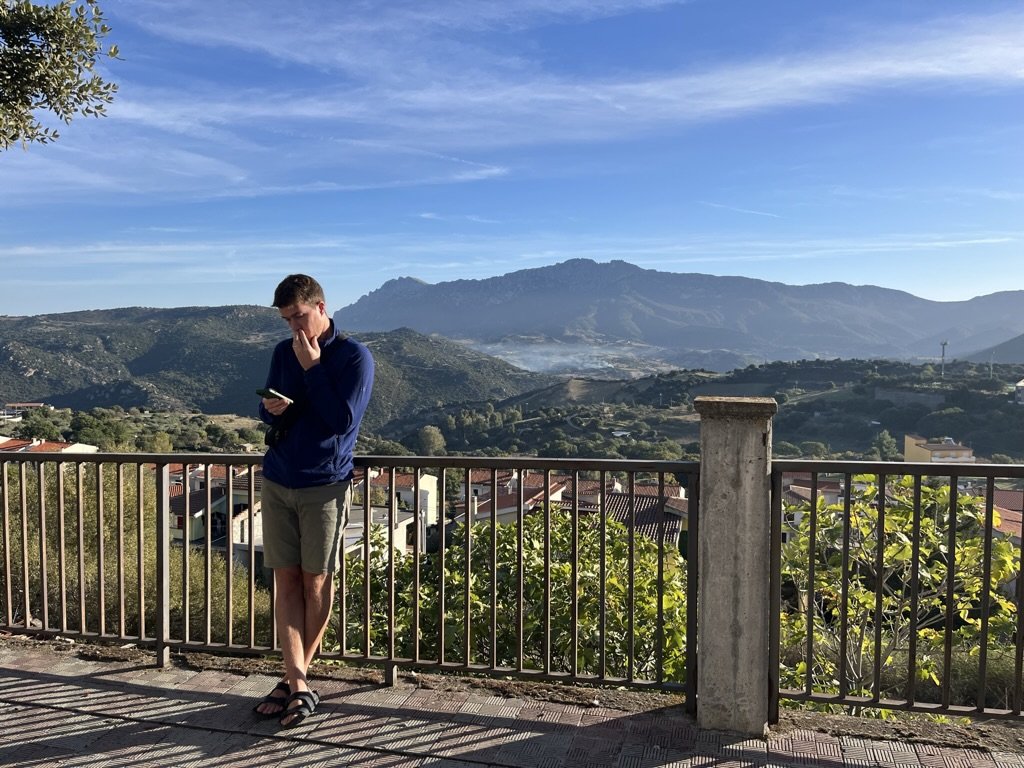
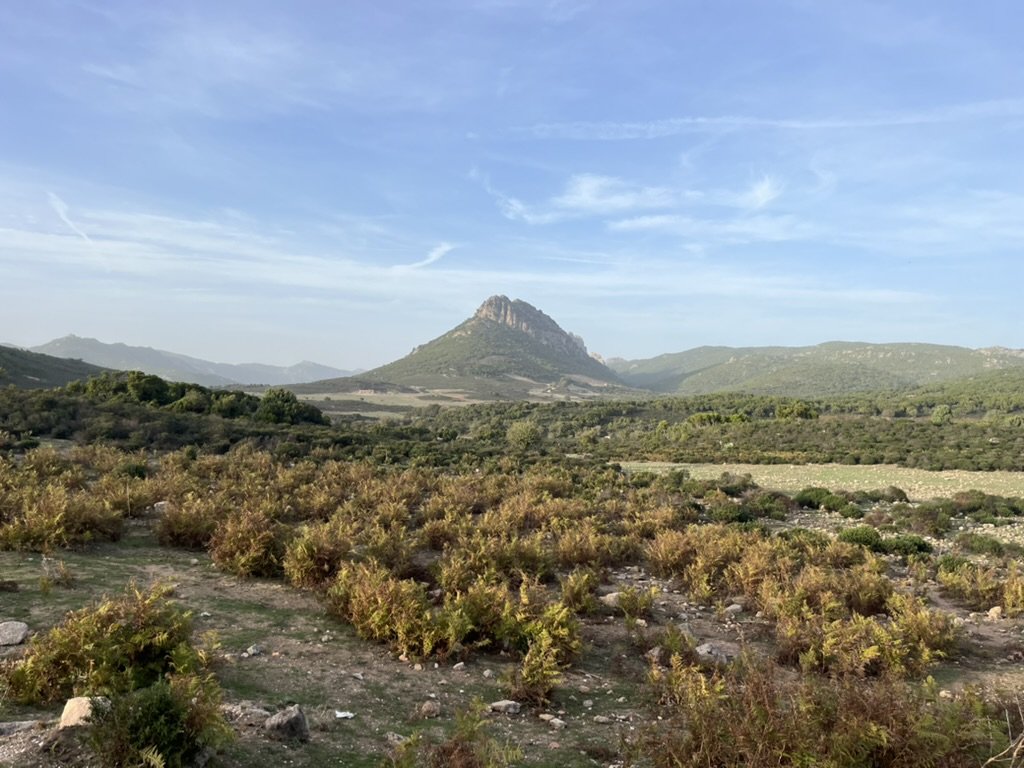
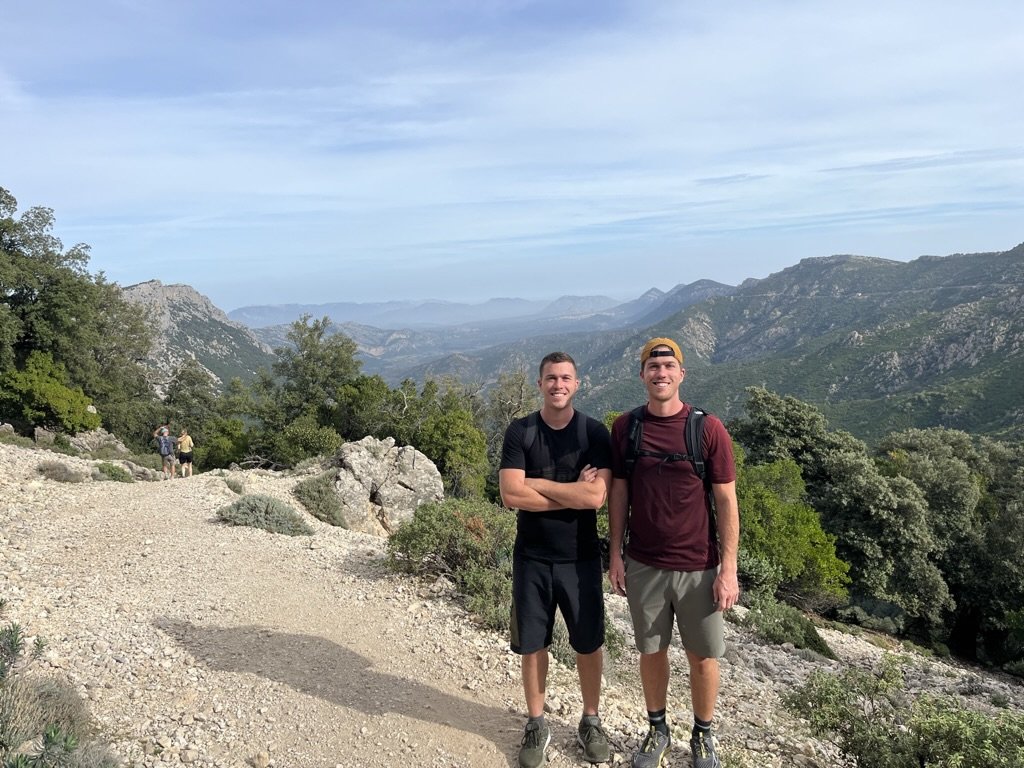
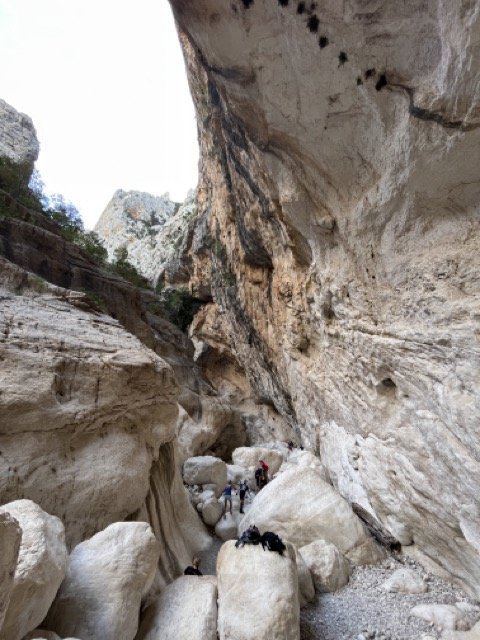
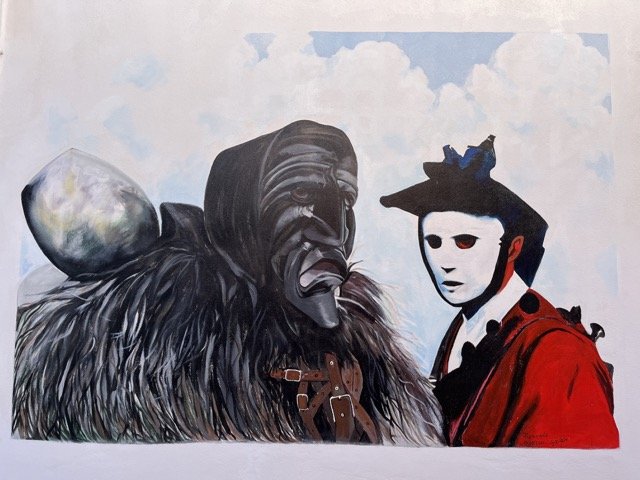
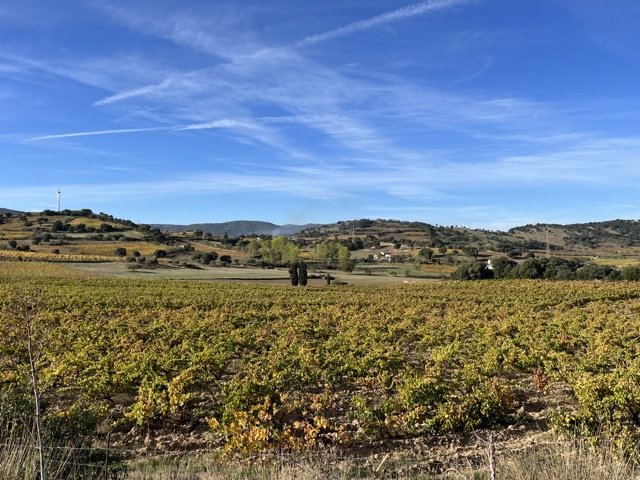
1. Baunei
Baunei is a tiny town at the start of the Supramonte mountains that practically hangs off of a cliff. Driving to town from the south, a ridge suddenly rises and then you’re able to make out a cluster of buildings almost at its top. It’s a very cool sight.
The main reason to visit Baunei is for easy access to the hiking trails that lead down the cliffside to Cala Mariolu and Cala Goloritzé, which are otherwise only accessible by boat.
2. Oliena
A little town of about 7,000 at the start of the Barbagia region, Oliena is now host to a burgeoning corner of the Sardinian wine industry.
The local Cannonau red wine produced here is some of the best in Sardinia and you have a number of small, artisan producers who offer tours and tastings. The views of the granite massifs that surround the town are also spectacular.
3. Mamoiada
Mamoiada, in the heart of the Barbagia, is famous for its carnival celebration where residents don mysterious masks (known as Mamuthones) and outfits adorned with massive brass bells and proceed down the city’s streets in a striking procession.
The origins of the masks and the curious procession during which they are worn, is unknown. Viewing the procession is one of the most fascinating experiences one can have in Sardinia. If you’re visiting outside of February (which most people are), the town is another center of Cannonau wine production and the vineyards are lovely.
4. Tiscali ruins
The archeological site of Tiscali’s Nuragic origins are still a mystery to researchers. And, while it is not the best preserved site of ruins in Sardinia, it’s one of the island’s most iconic. Its natural setting is also fantastic. Deep in the mountains, the site of this ancient town is reachable by a hiking trail a few kms long.
The site sits practically inside a cave and is thought to have been inhabited beginning almost 3,000 years ago.
5. Su Gorropu canyon
Su Gorropu is a deep canyon, one of the deepest in Europe, that is reachable by a short, but steep hiking trail. The most striking aspect of it is a section where the canyon suddenly narrows into a ravine, surrounded by high granite walls, that is barely a few meters wide.
As you go deeper into it, huge boulders block the path and are a favorite for rock climbers and bouldering enthusiasts. It’s all very well marked and there is a cafe near the parking lot by the entrance where you can buy [overpriced] water and snacks.
6. Hiking in the Supramonte mountains
The Barbagia region is made of the Supramonte mountain range whose dense forests, craggy peaks, and limestone ravines are a haven for wildlife, hikers, and rock climbers. The highest peak is Mount Corrasi at 1,463 meters. The best hiking is around the town of Oliena.


5-day and 10-day Sardinia itineraries
The following itineraries are all road trips. Getting around Sardinia absolutely requires a car and there is no way to do a visit to multiple locations and many beaches without one.
The itineraries allow you to stay in 2-3 nights in two locations and do drives from each, or pack up each night and stay directly in each now location.
5-day south Sardinia itinerary - Arrive and depart from Cagliari
Day 1 - Cagliari (stay in Cagliari)
Day 2 - Chia beach, Nora archeological site, Tuerredda beach (stay in Teulada)
Day 3 - Boat trip around Porto Zafferano and Teulada beaches (stay in Teulada)
Day 4 - Carloforte (stay in Carloforte or Teulada)
Day 5 - Masua, Buggerru, and Portixeddu (stay in Buggeru)
This 5-day trip includes a host of beaches to west of the city of Cagliari. Although much less well known than the beaches of the Costa Smeralda, this section of the island also has some of the finest beaches you’ll ever see. Although extremely close to Cagliari, many of them are relatively unknown to tourists and not very busy even in high season.
Your first day is dedicated to enjoying the city of Cagliari, Sardinia’s capital. From here, you go west, spending a full day beach hopping and visiting the evocative Phoenician archeological site of Nora.
On your third day, take a boat trip from Teulada marina to see and swim at the incredible nearby protected beaches that are exclusively accessible by boat. Once within a NATO base, these have only recently become open to the public.
Your 4th day is spent on the island of Carloforte, once founded by Genoese fishermen, which has unique architecture reminiscent of the Ligurian coast as well as great beaches and walking trails.
Your final day is spent on the Costa Verde, a sparsely populated and seldom visited stretch of coast with big, wild beaches and high cliffs. It’s a world away from the tiny coves and bays that people generally associate with Sardinia.
5-day east Sardinia itinerary - Arrive to Olbia and depart from Cagliari
Day 1 - Costa Smeralda (stay in Baja Sardinia)
Day 2 - San Teodoro & Budoni (stay in Orosei)
Day 3 - Boat trip in the Gulf of Orosei from Cala Gonone (stay in Orosei)
Day 4 - Cala Gonone to Costa Rei (stay in Costa Rei)
Day 5 - Costa Rei and Villasimius (stay in Costa Rei)
This itinerary covers the Costa Smeralda, Gulf of Orosei, Baunei Coast, and southeastern beach resort area of Costa Rei/Villasimius.
You begin beach hopping in the Costa Smeralda, but moving south towards the Gulf Orosei. Here, you spend a full day enjoying the beaches around San Teodoro and then another day taking a boat trip from Cala Gonone to some outrageously beautiful beahces.
Your 4th day is a long one, but a necessary one. You depart from the northeast, and make your way to Villasimius, cruising down Sardinia’s eastern coastline. En route, be sure to stop at beaches like Cea, Torre di Bari, and Foxi Manna. You’ll arrive in the late afternoon to Villasimius.
On your final day, dedicate the entire day to leisurely hopping between the gorgeous beaches that dot the short coast around Villasimius and Costa Rei, a favorite beach resort area for Cagliari locals.
5-day northeast Sardinia itinerary - Arrive and depart from Olbia
Day 1 - Santa Teresa di Gallura beaches
Day 2 - La Maddalena archipelago
Day 3 - Costa Smeralda beaches
Day 4 - San Teodoro and Budoni
Day 5 - Boat trip in the Gulf of Orosei from Cala Gonone
5-day northwest Sardinia itinerary - Arrive and depart from Alghero
Day 1 - Alghero
Day 2 - Mugoni beach, Capo Caccia promontory, and Grotta di Nettuno
Day 3 - Stintino beach
Day 4 - Bosa
Day 5 - Sinis Peninsula
5-day north Sardinia itinerary - Arrive to Alghero and depart from Olbia
Day 1 - Alghero
Day 2 - Stintino and Castelsardo
Day 3 - Santa Teresa di Gallura
Day 4 - La Maddalena
Day 5 - Costa Smeralda: Porto Cervo & Porto Rotondo
10-day Sardinia itinerary - Arrive to Alghero and depart from Cagliari
Day 1 - See Catalan architecture in elegant Alghero (stay in Alghero)
Day 2 - Spend the day swimming at iconic Stintino beach (stay in Alghero)
Day 3 - Depart Alghero for Castelsardo & Santa Teresa di Gallura (stay in Santa Teresa)
Day 4 - Visit the stunning La Maddalena archipelago (stay in Santa Teresa)
Day 5 - Explore the Costa Smeralda beaches around Porto Rotondo (stay in Santa Teresa)
Day 6 - Do a boat trip in the Gulf of Orosei (stay in Orosei)
Day 7 - Relax on the wide beaches of Costa Rei and Villasimius (stay in Villasimius)
Day 8 - Beach hop in Costa Rei and Villasimius (stay in Villasimius)
Day 9 - Experience cosmopolitan Sardinia in the island’s capital of Cagliari
Day 10 - One more day at the beach in Chia and Tueredda beach (stay in Cagliari)
10-day itinerary - Arrive to Cagliari and depart from Olbia
Day 1 - Explore Cagliari (stay in Cagliari)
Day 2 - Chia, Nora archaeological site, and Tuerredda beach (stay in Teulada)
Day 3 - Road trip through the wild Costa Verde: Masua, Buggeru, and Portixeddu (stay in Portixeddu or Cabras)
Day 4 - Bosa and around (stay in Bosa or Alghero)
Day 5 - Alghero city and Mugoni beach (stay in Alghero)
Day 6 - Stintino beach, Castelsardo, and Gallura coast (stay in Santa Teresa di Gallura)
Day 7 - La Maddalena archipelago (stay in Santa Teresa di Gallura)
Day 8 - Costa Smeralda (stay in Santa Teresa di Gallura))
Day 9 - Costa Smeralda/Orosei (stay Orosei)
Day 10 - Cala Gonone boat trip (stay in Orosei)


More Sardinia travel info
For advice on planning your trip, check out some of my other Sardinia guides and itineraries!

Simone Scalas
Sardinia Expert based in Cagliari
Ciao ragazzi! 👋
Hi, I'm Simone, and I've been a tour guide and travel consultant here in Sardinia for the last 21 years. If you're looking for some local advice on your trip, I'd love to help!
Learn more Book a consultation
Connect with Simone












